- Things To Do In Cheshire
- Things To Do In Chester
- Things To Do In Liverpool
- Things To Do In Manchester
- Things To Do In York
- Bed & Breakfast
- Hotels In Chester
- Pub Accommodation
- Serviced Apartments In Chester
- Bars & Nightlife
- Pubs In Chester
- Restaurants In Chester
- Tea Rooms and Coffee Shops
- High Street Shops
- Advertise With Us


Macclesfield Forest

Chester Cathedral Christmas Tree Festival

Gullivers Land Of Lights

Luminate Cheshire

Leonardo Hotel Chester

Moxy Chester

Hotel Indigo Chester

The Bunkroom

Carbonra Restaurant Chester

Da Noi Chester

The Hollies Farm Shop Cafe

Wesley Church Cafe Chester

Fairtrade Shop At Wesley Church

Timko Ropes

Align Your Body

B and M Bargains
- Things To Do
Chester Castle

The 12th-century Agricola Tower was the first stone gateway to Chester Castle, which had been founded by William the Conqueror in 1070 in the south-west part of the city. On the first floor is the chapel of St Mary de Castro, which contains some exceptionally fine wall paintings from about 1240. By climbing the nearby stairs to the wall-walk, you can appreciate the castle’s position within the city.
Chester Tours run charged guided tours; the “Secret Tour” includes a visit to the Castle and Agricola Tower. There are two tours per month departing from the Town Hall Visitor Information Centre on the first Tuesday and third Friday of the month at 11.30am, between the beginning of April and the end October.
Chester Castle, Grosvenor Street, Chester, CH1 2DN
RELATED ARTICLES MORE FROM AUTHOR

Christmas At Bolesworth

Lanterns And Light At Chester Zoo
Leave a reply cancel reply.
Save my name, email, and website in this browser for the next time I comment.
POPULAR ATTRACTIONS

Chester Christmas Market

Beeston Castle

The Beatles Story

City Sightseeing Open Top Tour
Places to stay.

Hotels In Hoole Chester

Brook Mollington Banastre Hotel & Spa

Crabwall Manor Hotel & Spa

Doubletree By Hilton Chester
Editor picks.

POPULAR POSTS

Grosvenor Garden Centre

Chester Zoo

Cheshire Oaks Designer Outlet
Popular category.
- High Street Shops 113
- Restaurants In Chester 69
- Things To Do In Chester 49
- Hotels In Chester 41
- Serviced Apartments In Chester 25
- Tea Rooms and Coffee Shops 24
- Bars & Nightlife 19
- Things To Do In Cheshire 17

Chester Cathedral

The Chester Meadows
Chester Castle
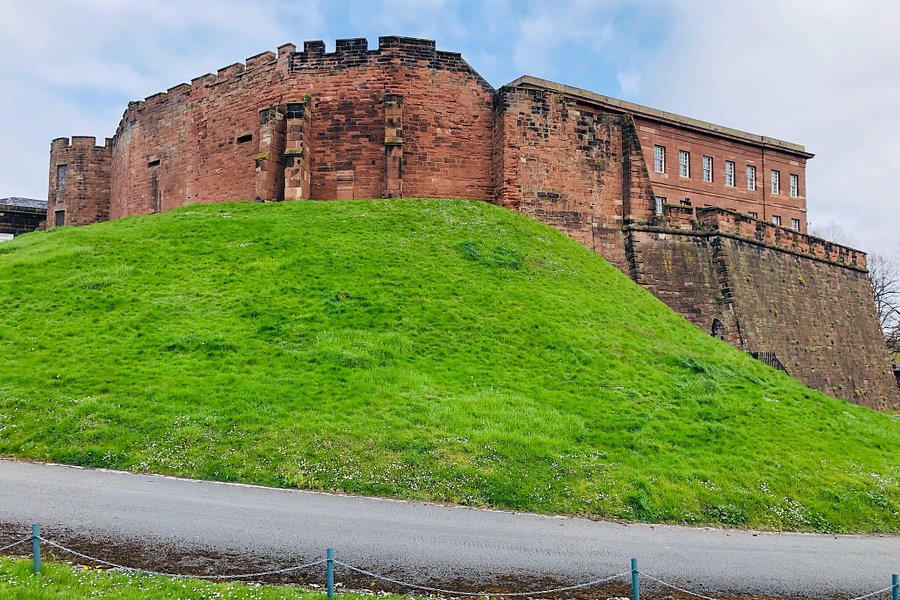
Top ways to experience Chester Castle and nearby attractions

Most Recent: Reviews ordered by most recent publish date in descending order.
Detailed Reviews: Reviews ordered by recency and descriptiveness of user-identified themes such as wait time, length of visit, general tips, and location information.

Also popular with travelers

Chester Castle - All You Need to Know BEFORE You Go (2024)
- (0.02 mi) The Saddle Inn
- (0.03 mi) Grosvenor Street Luxury 1 Bed Apartment with view
- (0.03 mi) Grosvenor Place Guest House
- (0.03 mi) Beautiful City Centre Cottage - Within the City Walls
- (0.04 mi) Historic City Centre Townhouse
- (0.01 mi) The Saddle Inn
- (0.04 mi) Moules a Go-Go
- (0.09 mi) Kings Head
- (0.10 mi) The Brewery Tap
- (0.09 mi) Ruan Orchid
- Advertise with us
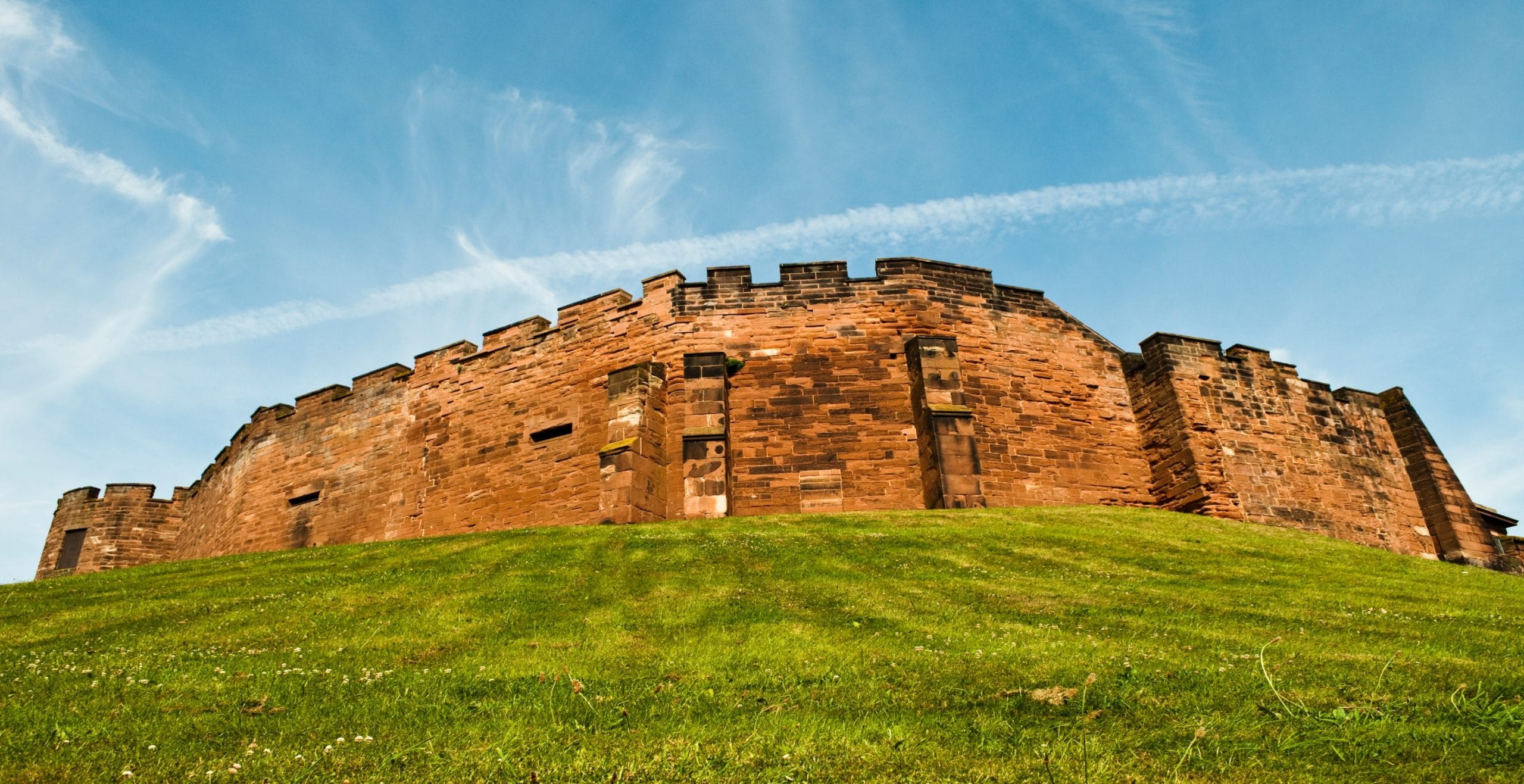
- History Magazine
- Destinations UK

Chester Castle: Agricola Tower, Chester, Cheshire
Built in 1070 on the site of an earlier Roman fortress, the only surviving part of medieval Chester Castle is the 12th century gateway.
Miriam Bibby & Elizabeth Craig-Johnson
This 12th century gateway is the only surviving part of medieval Chester Castle, apart from the remains of the tower known as the Flag Tower and a section of curtain wall. Built by William the Conqueror in 1070, the castle became the administrative centre of the Earldom of Chester. Hugh D’Avranches was the first holder of the title Earl of Chester, and the castle became crown property in 1237. The original wooden motte and bailey castle was rebuilt in stone in the 12th century along with the outer bailey. The stone gateway to the inner bailey was also added. This is now known as the Agricola Tower, and contains a vaulted chapel with frescoes dating to the 13th century.
Chester was important strategically since it was the site of resistance to William the Conqueror, who overcame it in 1070. The original medieval defences were on the site of the earlier Roman fortress. During the thirteenth century, the city walls were rebuilt, largely due to the threat from the resurgent Welsh under their leaders Llywelyn the Great and Llywelyn the Last. However, after Edward I’s conquest of Wales , Chester decreased in importance. During the English Civil War , Chester was a Royalist stronghold. With earthen defences added to the existing ones, the Royalists managed to hold out against Parliamentarian forces for some time. In 1793 much of the site was cleared for a new assize building. The remainder of the castle was destroyed by fire in the late 18th century.
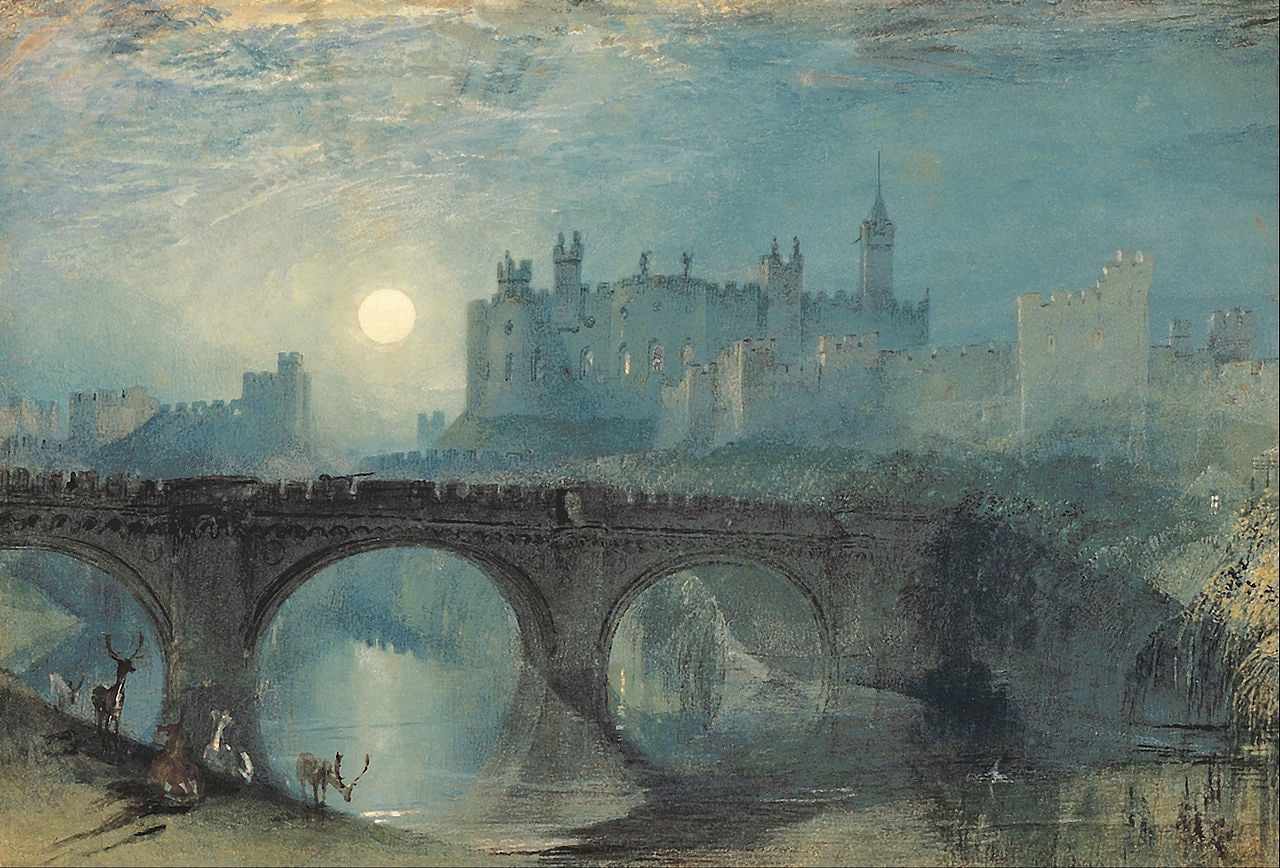
Selected tours of Chester
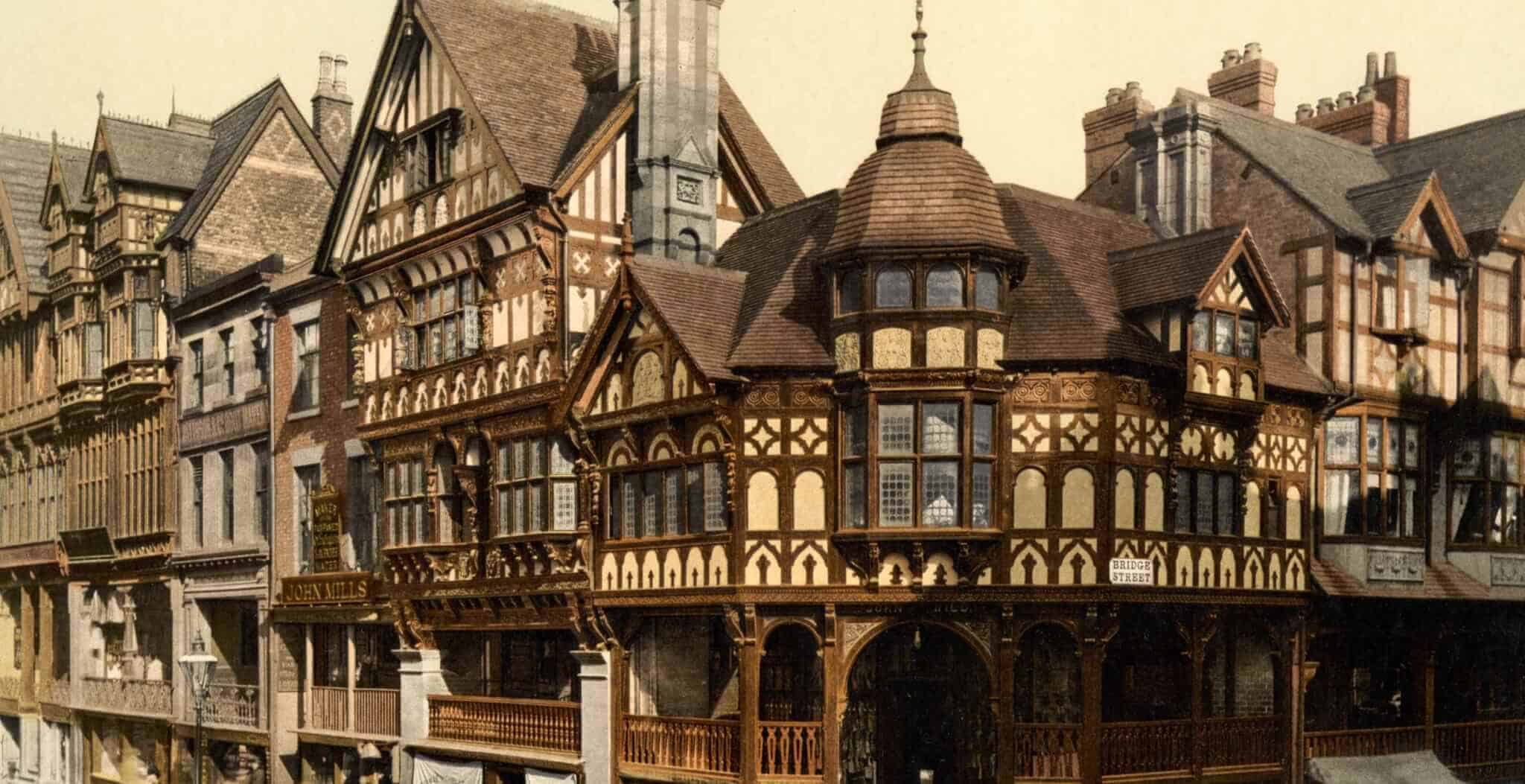
History in your inbox
Sign up for monthly updates
Advertisement
Next article.
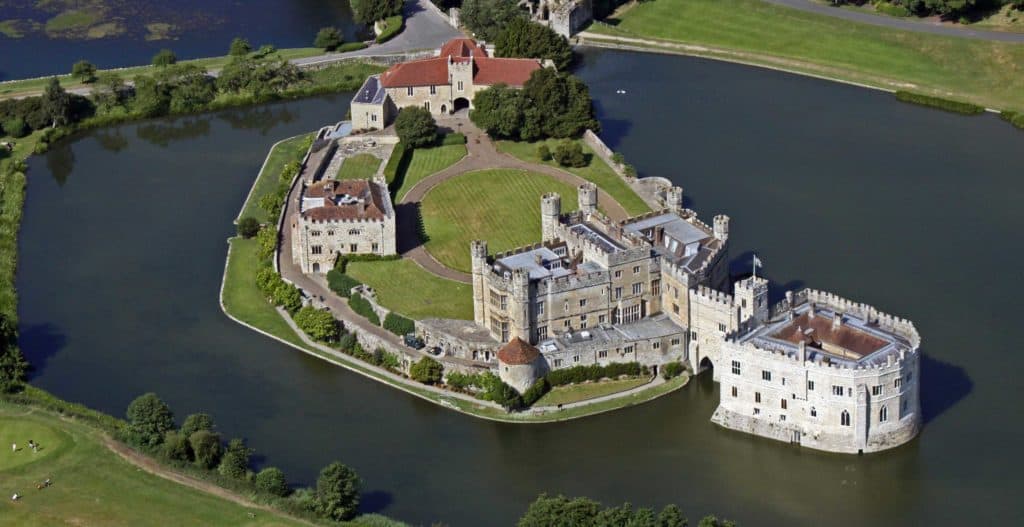
Castles in England
Browse our huge database of castles in England, from the world famous Warwick Castle to the lesser known motte and bailey castles scattered across the country.
Popular searches
- Castle Hotels
- Coastal Cottages
- Cottages with Pools
- Kings and Queens
Chester Castle

Top ways to experience Chester Castle and nearby attractions

Most Recent: Reviews ordered by most recent publish date in descending order.
Detailed Reviews: Reviews ordered by recency and descriptiveness of user-identified themes such as waiting time, length of visit, general tips, and location information.

Also popular with travellers

CHESTER CASTLE: All You Need to Know BEFORE You Go (with Photos)
- (0.02 mi) The Saddle Inn
- (0.03 mi) Grosvenor Street Luxury 1 Bed Apartment with view
- (0.03 mi) Grosvenor Place Guest House
- (0.03 mi) Beautiful City Centre Cottage - Within the City Walls
- (0.04 mi) Historic City Centre Townhouse
- (0.01 mi) The Saddle Inn
- (0.04 mi) Moules a Go-Go
- (0.09 mi) Kings Head
- (0.10 mi) The Brewery Tap
- (0.09 mi) Ruan Orchid

Medieval Britain
Medieval Castles – Medieval Villages
Chester Castle
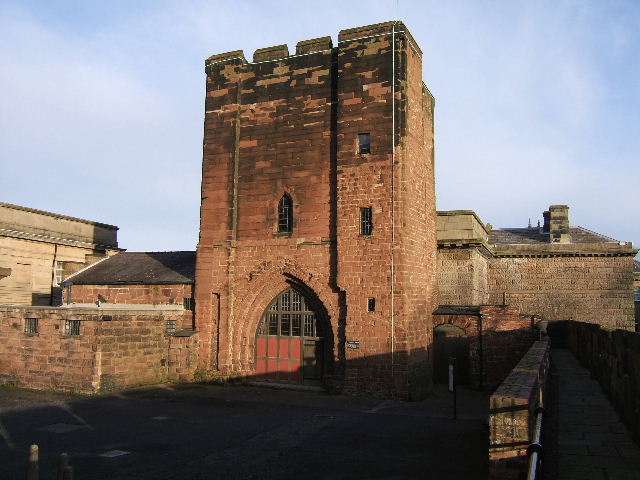
Cheshire, North West England ( 53.1853°N 2.8923°W )
Chester Castle is sited at the southwest extremity of the area bounded by the city walls and overlooking the River Dee. The castle was built in 1070 by Hugh d’Avranches, the second Earl of Chester and hosted visits from many powerful figures in the medieval period, including kings Edward I and Richard II.
The original structure would have been a Saxon motte-and-bailey castle with a wooden tower, which was replaced in the 12th century by a square stone tower, the Flag Tower. The walls of an outer bailey were built in the 13th century, during the reign of Henry III.
Prominent people held as prisoners in the crypt of the Agricola Tower were Richard II and Eleanor Cobham , and Andrew de Moray , hero of the Battle of Stirling Bridge. The Agricola Tower is a Grade I listed building. It is built in sandstone ashlar with a metal roof in three storeys.
Visit Chester Castle
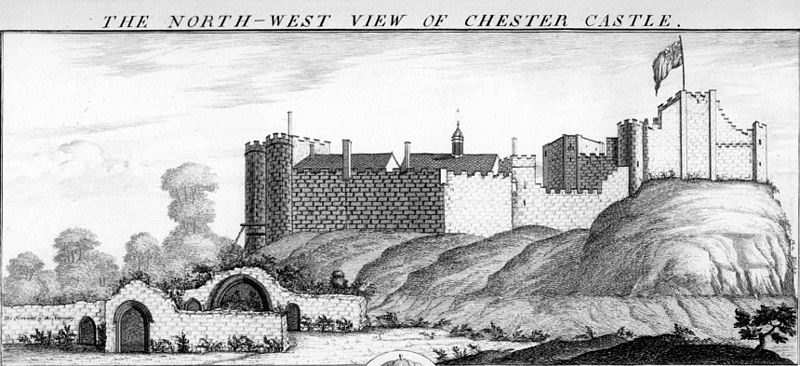
Check the Castle’s website for 2020 opening hours.
Grosvenor St, Chester CH1 2DN
0370 333 1181
Closed during the beginning of the year. Check the Castle’s website for 2020 prices.

Similar Castles
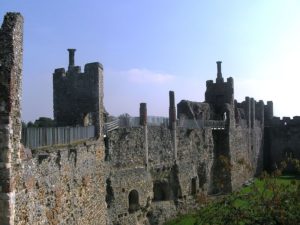
Framlingham Castle
Framlingham Castle has no central keep but a curtain wall with 13 towers.
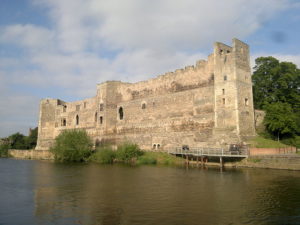
Newark Castle
Newark Castle is a 12th century castle by Alexander, Bishop of Lincoln.
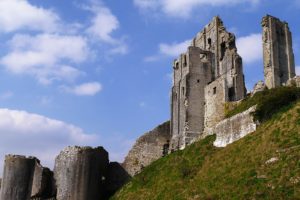
Corfe Castle
Corfe Castle is a ruined castle on the route between Wareham and Swanage.
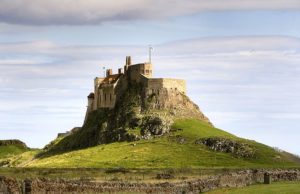
Lindisfarne Castle
Lindisfarne Castle is a 16th-century castle located on Holy Island.
More to see in North-West England
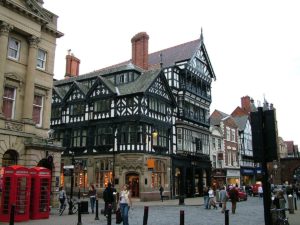
Chester is a walled city on the River Dee in Cheshire, England.
Books about Medieval Times
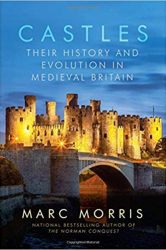
- English Castles
- Scottish Castles
- Welsh Castles
Chester Castle
Quick Navigation
Visiting chester castle.
Chester Castle stands in ruins, overlooking the River Dee in Chester, England. The castle hails back to 1070, standing in the southwest end of the city walls. Chester Castle and the Agricola Tower, and the inner bailey are opened a few times a week in season, but visitors can walk the city walls.
There are plenty of public car parks in the city centre, all within walking distance from the site. You find access via the Assizes Court car park on Grosvenor Str.
Free to view the Chester castle exterior from the circuit of the city walls during reasonable daylight hours. There’s a fee for the guided tours of the castle proper seasonally that visitors will find here.
The city walls are open for a year-round visit at any reasonable time during daylight hours. However, visitors may only access the castle itself, Inner Bailey and Agricola Tower in guided, seasonal tours announced here .
Location and Access
The Chester castle is accessible by both buses and trains and is located at:
Grosvenor Street, Chester, CH1 2DN.
You may walk the circuit of the City Walls at any reasonable daylight hours, and visitors may enjoy viewing the surviving masonry from the Roman and Medieval periods. Visitors may also enjoy the ruins of a former legionary fortress and Shrine dedicated to Minerva near the castle ruins.
You may access the little Rodee car park site and take a walk up the hill towards town. You can't miss the motte as it stands above the car park.
Know Before You Go
Chester Castle stands in ruins, and a courthouse and car park occlude a large part of the castle site.
Chester Castle is often closed to the public and only open to visitors by appointment. Dogs are allowed at the castle site as long as they’re on a lead. Visitors may view the castle exterior as they walk the city walls.
Places To Stay Nearby
Travelodge chester central bridge street.
In the heart of historic Chester, this Travelodge is located just a few minutes from the castle and offers affordable lodging options for individuals and groups of any size. The rooms are clean and spacious, and the hotel is conveniently located near bars and restaurants. If you need a night in after a day of exploring, this hotel also has a restaurant on-site.
Premier Inn Chester Central North Hotel
This 3-star hotel is in a quiet location near to the historic city walls and castle. With 41 rooms to choose from, the hotel accommodates both single and family guests. The hotel offers free wifi, a bar and restaurant and is close to an outdoor playground called Swonownia national park and Chester Zoo. Standard rooms range from $35-$59 depending on rate options.
Ye Olde King’s Head
This historic building and hotel dates back to 1622 and reveals Tudor-style architecture. It stands on an earlier 13th foundation and once housed Peter the Clerk, administrator of Chester Castle. Their site stated that there are 7 rooms and a restaurant for visitors to enjoy, with a good chance of ghost sighting.
History of Chester Castle
Chester Castle was an administrative centre of the Chester Earldom throughout the medieval and later periods. William the Conqueror founded it in 1070 as an earth and timber (motte and bailey) castle. In the 12th-century, occupants rebuilt the wooden fortress in stone.
-74 or 75 AD
The Roman Legion named Legio II Adiutrix established a fortress in Chester, which was an earth rampart protected by a wooden palisade and surrounded by a ditch.
Historians refer to the Mercian King Aethelfleda refortifying the Roman fortress of Deva at the castle site at this time. It’s not certain whether the Normans reused the Saxon fort, but William I extensively plundered the Saxon houses in Chester to make the Chester Castle.
Chester was a thriving port town under the control of the Crown but resisted Norman rule until William the Conqueror laid Chester to ruin. After destroying over 200 houses in the town, the Normans built a fortress of earth and timber south of a previous Anglo-Saxon burh.
-1070 (First Castle Built)
Hugh d'Avranches , the second Earl of Chester , built the first Chester Castle. De Avranches, along with the Earls of Hereford and Shrewsbury, worked together to secure the north of the Anglo-Welsh border, establishing a base of Anglo-Norman operations in resistance to their Welsh opponents.
-1210 (Agricola Tower)
The Agricola Tower was built as the bailey gatehouse and included a chapel on the first floor called the Chapel of Mary de Castro.

-Mid-12th Century
The Castle construction prompted the expansion of the town defences, and by the mid-1200s, the surrounding town walls were established, including three new gates:
-1237 (Reverts to the Crown)
John the Scot, the last Earl, died, and the earldom fell away, leaving Chester Castle in the hands of the Crown, but it remained the administrative centre of the area. The Royals further built the castle and gave the chapel of Mary de Castro a second coat of paintings devoted to the Virgin Mary,
-1241 (Henry III Base of Campaigns)
Chester Castle became the base of Henry III's campaigns in Wales and built an oriel or large bay window in front of the chapel's doorway. The King ordered the Great Hall built in the south wall of the inner bailey at the cost of £350. In this period, the castle also began its purpose as a jail.
King Henry III grants the title of the Earl of Chester to his son, Prince Edward.
-1264 (Battle of Lewes)
Rebels led by Simon de Montfort, Earl of Leicester, defeated the King and took him as a prisoner. The insurgents seized Chester Castle, and it fell under the power of Lucas of Taney.
-1265 (Battle of Evesham)
The rebel control of the castle was short-lived as the King's son Prince Edward retook possession of the castle after defeating Monfort in the battle of Evesham.
-1251-67 (Prince Edward Establishes Base)
Edward I took control of Chester Castle as his base of campaigns against the Welsh invasion. At this time, he ordered a gateway built connecting to the outer bailey with two drum towers. He added a drawbridge and moat and added separate quarters for himself and the Queen.
At the ascension of King Edward I, Chester became pivotal in the rising conflict in Northern Wales. Llywelyn ap Gruffudd refused to pay homage to Edward, prompting an English invasion.
-1275 (First War of Welsh Independence)
Edward I stays at Chester Castle awaiting homage from Llywelyn ap Gruffudd. When Gruffudd refused tribute, the First War of Welsh Independence was launched from Chester into Wales.
-1282-3: (Second War of Welsh Independence)
Chester Castle again formed the base of Edwards's second campaign in Wales called The Second War of Welsh Independence. Edward caught and imprisoned Price Llewellyn's brother and five squires in the castle gaol.
-1284-1291 (Fortification Upgrades)
Edward follows up his defeat of the Welsh by enhancing the existing castle fortifications and defences and upgrading the residences to support royal visits to the sum of £1,400, a considerable amount for that time.
-Early 1300s
As Wales moved into a period of relative peace, Chester castle fell back into its administrative role. The castle lost its importance as the river between Chester and the ocean silted up, causing the maritime supply to shift from Chester to Liverpool.
-1322
Edward II grants Chester Castle to the despised Hugh Despenser.
After Hugh Despenser's fall from the King's grace, the castle reverts to the Crown.
-1327
Thomas of Warwick took custody of the castle and began repair and provisioning.
-1347 (Beginning of Disrepair)
Historical documents suggest that the castle began falling into disrepair, including the Great Hall and the Chapel.
Richard II occupied Chester Castle and had a heated bathroom built and his apartments lavishly decorated.
Castle occupants decided to move the courthouse and exchequer outside the castle precincts.
-The 15th Century
The 15th century was not a pivotal time for Chester Castle, and the main notable event was Chamberlain of Chester successfully defended the castle from a siege during the Epiphany Rising . At the time, Chester Castle garrison consisted of 35 archers (14 hectares) and eight men-at-arms.
-1642 (English Civil War)
Chester supported the Royalist cause and became a pivotal base of operations with its port facilities for soldiers and weapons. The Royalists conducted extensive earthworks around the town, including artillery posts to guard against the parliamentarian approach.
-1643-46 (Parliamentary Troops Attack)
Parliamentary forces assaulted Chester Castle in July 1643, as well as in January and April 1645.
-June 1645 (Siege and Surrender)
The royals suffered a crushing defeat at The Battle of Naseby, prompting yet another Parliamentarian siege of Chester. At the subsequent battle of Rowton Heath, the King was defeated and fled to Wales. As a result, in 1646, Chester surrendered.
-After 1646 (Ruins)
Although the castle avoided slighting after the English Civil war, Parliamentary troops took occupation of Chester Castle. Both Cromwell used the area as a supply base, and William III used the area as a supply base at different times, but by the early 1800s, the castle was falling to ruin.
Suspects implicated in Monmouth's Rebellion were imprisoned in Chester Castle.
James II visited the castle and joined a mass.
-1696
Edward Halley of the comet fame set up a mint in the castle. Visitors can still find the remains of the mint behind the Half Moon Tower,
-1715 (Prison)
The powers that be briefly revived Chester Castle as a prison to house Jacobite's captured after their defeat at the Battle of Preston.
-1760 (Collapse)
A large section of the curtain wall of the inner bailey fell at this time.
The military made substantial alterations to the castle, removing the south wall of the inner bailey for a gun platform. They also partially destroyed the tops of the Flag and Half Moon towers to form a stable base for their mounted cannons.
-The Early 1800s (Ruins)
By the early 1800s, Chester castle had fallen into a state of ruin.
-1792
Thomas Harrison designs and completes a new prison in Chester Castle to great acclaim.
-Late 18th Century/Early 19th Century
Between 1900 and 10902, they demolished the prison buildings, and The City Walls were restyled as a promenade walk around Chester City. Many vital areas of the castle were sadly destroyed to make way for new buildings.
-21st Century
Chester Castle falls under the care of English heritage, and certain structures of the castle fall under both Grade I and Grade II heritage sites.
Chester Castle Occupants
Chester Castle has been home to an abundance of famous figures over its lengthy lifespan. As well as willing royal occupants, Chester castle was also home to some prominent figures who did not stay there willingly. Some of the more notable residents include:
11th Century Occupants
- 1070 - Hugh d'Avranches , the second Earl of Chester , built and occupied the first Chester Castle.
12th Century Occupants
- 1237 - A succession of Earls of Chester occupy the castle until the last Earl, John the Scot, dies.
- 1241-64 - King Henry III established Chester castle as his base of campaigns.
- 1264-65 - Lucas of Taney takes possession of Chester for a short year after the revolt of the rebel Simon de Montfort.
- 1251-67 - Prince Edward I established his base at Chester Castle.
13th Century Occupants
- 1322-1326 - King Edward II grants ownership of the castle to his favourite Hugh Despenser, who falls from grace after four years at Chester Castle.
- 1327 - Thomas of Warwick occupies the castle.
- 1399 - Richard II occupied Chester Castle and decorated it lavishly.
14th Century Occupants
- 1442 - Eleanor Cobham , Duchess of Gloucester, was detained at the castle for conspiring in the King's death.
- 1479 - Richard Grey was appointed constable of Chester castle.
Images of Chester Castle

Images Supplied and licensed from Shutterstock Standard Licence Package
Chester Castle Facts
- Chester Castle was once the site of one of three permanent Roman legionary fortresses in England, which the Romans named Deva Victrix.
- The largest Roman amphitheatre in England once stood outside the original fort and could sit between 8000 and 10,000 people.
- The civilian amphitheatre , built in the 1st century, could sit between 8,000 and 10,000 people.
- In a Parliamentarian siege on Chester town, by 1646, the Chester citizens (17,000) had been reduced to eating their dogs.
- In 1399 Henry Bolingbroke , the future Henry IV, stayed at Chester Caste twice.
- In 1687 King James II visited the castle and joined the mass.
- In November 1950, workmen uncovered a treasure hoard near Chester Castle with 547 coins, 27 ingots, and 120 broken hacksilver jewellery dating back t o AD 965-970.
Chester Castle Q&A
What kind of castle is chester castle.
Chester Castle is described as both a Timber and Masonry Castle as it was initially made of earthworks and timber and then replaced in stone. Although many used it in a military capacity in its lifespan, the castle functioned primarily as an administrative center.
How Old Is Chester Castle?
Chester Castle is about 951 years old. William I built the first motte and bailey structure in 1070, followed by the perimeter walls in the late 12th century and the gates and inner bailey added in the 13th century.
The gates and drum towers were a 13th-century addition when they walled up the Agricola tower gate. They walled the outer bailey with stone around 1247 and the great hall in between 1292-93. Finally, they added the Great Hall and the outer gatehouse in the mid and late 1200s .
Location of Chester Castle
The location of Chester Castle hasn’t changed much since the original earthwork structure. Although the many occupants over history rebuilt the castle many times, the building phases were extensions rather than a shift from the original position.
The original castle was built on the spur of rock above the sloping riverbank and flanked by a mound to the west, probably the vase for a sturdy wood tower. A sizable outer bailey stood to the north, and broad ditches surrounded the area with palisades.
A small harbour lay between the castle and the river to take advantage of the water links to Holt and the North Wales coast.
Sadly only fragments of the 12th-century curtain wall remain with the Flag Tower and Agricola Tower. Callous developers levelled the remaining medieval buildings to make way for the new barracks and County Courts. The castle still commands the bridge of River Dee from the southern corner of the city wall.
Other Places To Visit Near Chester Castle
Grosvenor museum .
Grosvenor Museum offers a glimpse into the history of the area with impressive exhibits of art and silver from the Roman occupation. It also offers a Period House with interesting artifacts from the 17th century onwards. Entrance to these exhibits is free of charge, and donations of £3 are left to visitor discretion.
Chester Cathedral
Chester Cathedral is a beautiful structure, some of which dates back to 1093. The site was previously a Saxon place of worship, but Benedictine monks built the first Norman church.
Chester Cathedral first started as a Benedictine Abbey in 1093. During Saxon times, the site was used as a place of worship, but the Benedictine monks were the first to build a church there in the Norman style.
The Cathedral still offers services as well as a gift shop and cafe. Beautiful gardens surround the site, and there are falconry displays, too. Visitors can see various birds of prey at the cost of around £10 for 2 adults and up to three children.
Chester Rows
Chester Rows are a labyrinthine structure of galleries with some original 13th-century buildings with plenty of shops to explore. The Three Old Arches are a fine example of an original 13th build, and the rows are an architecturally unique area for visitors to enjoy while shopping. Entrance is free to the public.

15 Top-Rated Attractions & Things to Do in Chester
Written by Bryan Dearsley Updated Dec 28, 2023 We may earn a commission from affiliate links ( )
Chester, the county town of Cheshire, is noted for its vast array of historic monuments, including its magnificent medieval city walls.
Chester's roots date back to Roman times, and the Vikings, Danes, Saxons, Scots, and Normans also occupied the settlement at various times. By far the greatest influence on the city, however, was its maritime trade along the River Dee from the 12th to 14th centuries, which brought with it commercial and cultural prosperity.
The Old City has been a conservation area for more than 50 years and retains numerous well-preserved half-timbered houses, as well as the Rows , its magnificent two-tier medieval arcades. Add to this mix its attractive bridges, parks, and riverside walks, as well as the city's many musical festivals, excellent shopping, and one of the world's top zoos, and it's little wonder Chester ranks so highly on England's most popular places to visit.
Learn more about these and other great attractions with our list of the top things to do in Chester, England.
See also: Where to Stay in Chester
1. Take a Walk along Chester City Walls
2. see the historic chester rows, 3. watergate and lower bridge streets, 4. chester cathedral, 5. chester cathedral choir, 6. chester roman amphitheatre, 7. take the kids to chester zoo and the blue planet aquarium, 8. dewa roman experience, 9. the roman gardens, 10. enjoy a riverside stroll through the groves, 11. st. john the baptist's church, 12. grosvenor museum, 13. cheshire military museum, 14. cheshire workshops, 15. beeston and peckforton castles, where to stay in chester for sightseeing, chester - climate chart.
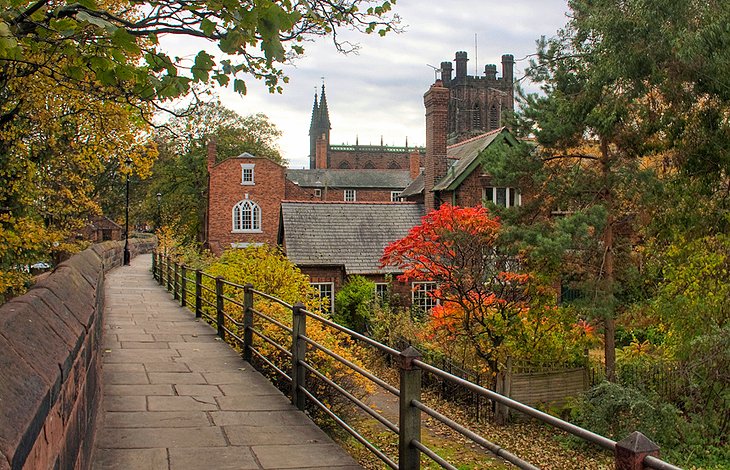
Built mostly of red sandstone, Chester's City Walls follow the even older Roman walls, except where they extend to the river to include Chester Castle . The complete circuit - the best preserved of its kind in Britain - is a nearly two-mile walk taking in the four main gates: Northgate, Eastgate, Bridgegate, and Watergate.
At Eastgate, you'll see a clock erected in 1897 to mark Queen Victoria's Diamond Jubilee, while at Northgate, traces of Roman foundations can still be seen. Another must-see while walking the walls is King Charles' Tower . It was here in 1645 that Charles I is said to have witnessed the defeat of his troops at Rowton Moor during the English Civil War. The tower houses a small civil war museum, and evidence of the conflict can still be seen at places along the wall.
Other City Wall highlights include Morgan's Mount, an impressive watchtower; Pemberton's Parlor, a semicircular tower with great views of the river area; and Bonewaldesthorne's Tower, a solid sandstone Water Tower built in 1325. You'll also pass Grosvenor Bridge, adjacent to the Rodee, an ancient horse racing track.
Finally, be sure to visit the famous Wishing Steps . It's said that anyone capable of running up and down twice without drawing breath will supposedly see their wishes fulfilled.
Address: Northgate Street, Chester

Among Chester's most distinctive features are its galleried walkways, with their many shops running the length of the old stone and half-timbered buildings. Dating from the 14th century, the Chester Rows evolved from houses and shops built partly in front of (and partly on top of) piles of rubble left from the Roman ruins.
These rows are found in all four of the town's main streets which, following the Roman town plan, meet at right angles at the market cross. In Eastgate, Bridge, and Watergate Streets, the galleries are at first floor level, while in Northgate Street they're mostly at ground level.
Address: Bridge Street, Chester
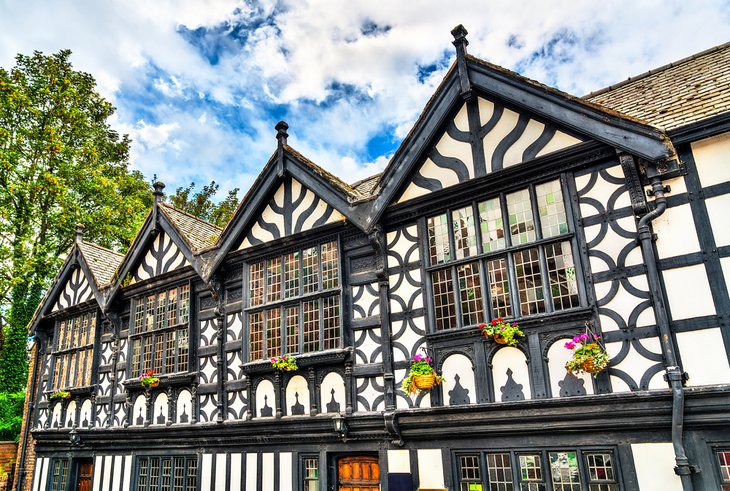
Watergate Street has several exceptional half-timbered houses, including God's Providence House, built in 1652 and so named as its inhabitants were spared the plague. It's also home to Bishop Lloyd's House, with its beautiful carvings.
Leche House (1579) also has elaborate half-timbering, as does richly-decorated Stanley Palace (1591). Watergate street is also where you'll find the oldest building in Chester, the Blue Bell Inn, which dates back to the late 14th century.
Lower Bridge Street is also well-known for its beautiful half-timbered houses, in particular Falcon House. Also worth seeing is Tudor House, built in 1603 and one of the oldest dwellings in the city. The Old King's Head Hotel and the Bear and Billet, a four storied half-timbered inn, are also worth checking out and make for great photos.
Address: Watergate Street, Chester
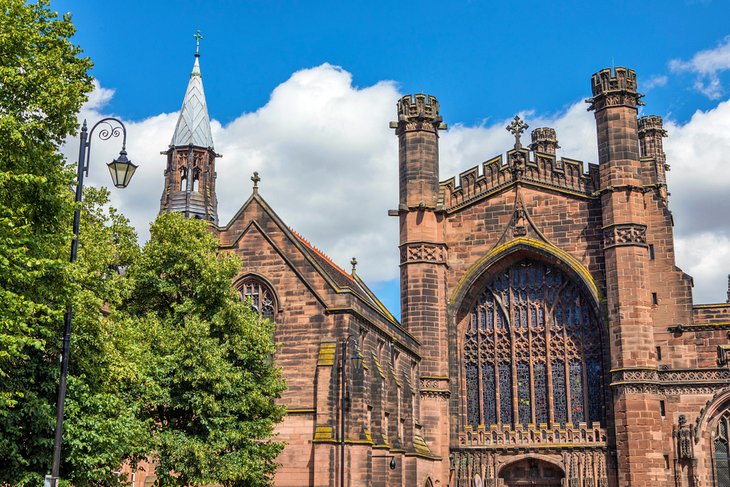
Chester Cathedral is built on the site of a much older church dating from AD 958 and a later Benedictine abbey (part of the old Norman church survives in the north transept). The abbey in turn became a cathedral when, following the Dissolution, a new diocese was created by Henry VIII in 1541.
The Lady Chapel and Chapter House are Early Gothic (post 1240), while most of the choir is High Gothic (1280-1315). The tower, west front, and upper part of the nave are Late Gothic (1485-90).
While the splendid three-aisle pillared nave of the Gothic basilica is undoubtedly one of this elegant structure's most striking features, the west end is also notable for several features. These include the baptistery, another relic of the Norman church, which contains a 6th-century Venetian font, and the Consistory Court, which, though less visually impressive, is nevertheless unique in England.
Address: 12 Abbey Square, Chester
Official site: www.chestercathedral.com
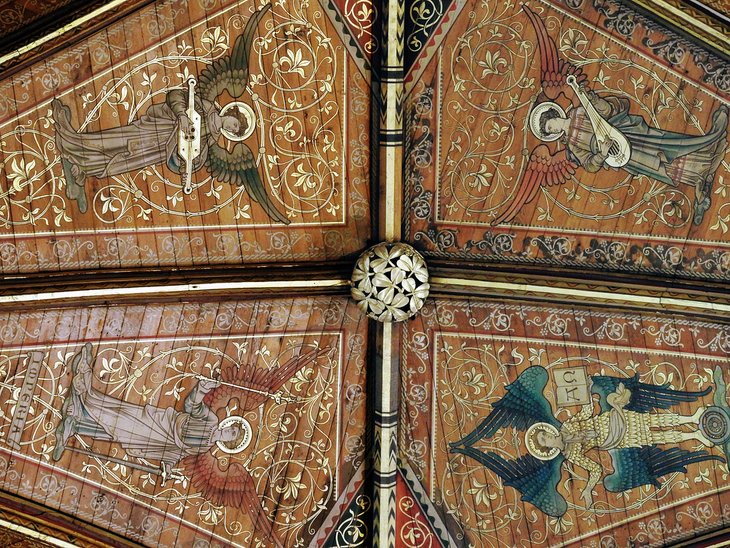
The finest part of Chester Cathedral, its Early Decorated Choir, certainly deserves to be visited – even if it's all you see of this magnificent building. Its 14th-century stalls are superbly carved, with 48 droll misericords and an old abbot's seat inscribed with the Tree of Jesse, and part of a 14th-century shrine to St. Werburgh can be seen in the Lady Chapel .
On a musical note, Handel's Messiah was first rehearsed here and is often performed during the Christmas season. Visitors are also often thrilled to have the opportunity to hear the country's oldest volunteer choir in action, along with regular organ recitals.
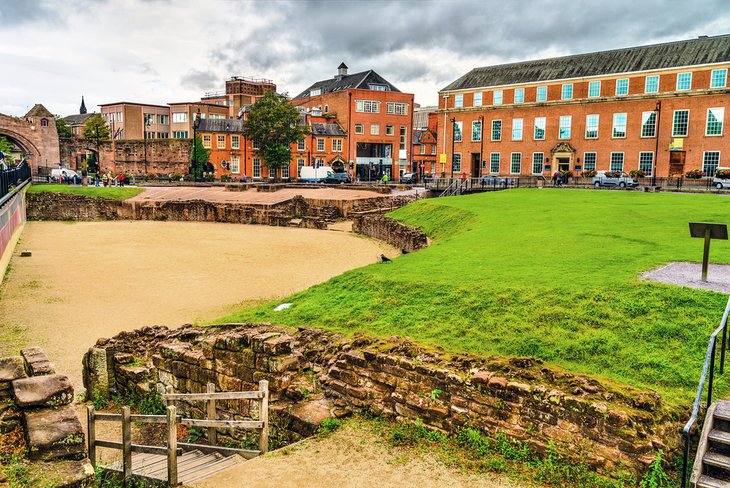
The largest such attraction in Britain – and one of the top free things to do in the city – Chester Roman Amphitheatre remains the subject of continual excavation and discovery. As recently as 2005, excavations revealed two successive stone-built amphitheaters with wooden seating, one of them similar to that found in Pompeii.
In Roman times, the site was used for entertainment and military training by the famed 20th Legion, a fact that is especially impressive as you stand on the very spot where such activities took place some 2,000 years ago.
Address: Little St. John Street, Chester

In Upton, just over a mile north of Chester city center, Chester Zoo is one of the UK's largest and most popular zoological parks. Home to more than 11,000 animals representing some 400 different species, this 125-acre site also features prizewinning landscaped gardens and its very own monorail system. Animal attractions include Chimpanzee Island, a penguin pool, and Europe's largest tropical house.
Another great wildlife-themed tourist attraction is Blue Planet Aquarium , home to more than 50 displays of fish and marine species. The largest section, the stunning Caribbean Reef exhibit, houses more than 700 fish, including southern stingrays and moray eels, as well as Europe's largest collection of sharks.
If your budget allows, book one of the attraction's popular shark dive experiences.
Address: Cedar House, Caughall Road, Chester
Official site: www.chesterzoo.org
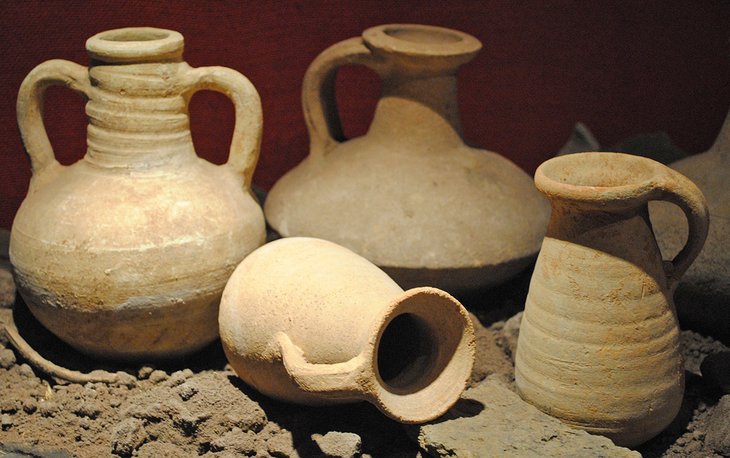
Be sure to visit the Dewa Roman Experience, a fascinating interactive reconstruction of the sights, sounds, and smells of life inside the 2,000-year-old Roman fortress buried beneath modern-day Chester.
The adventure begins aboard a Roman galley, before moving into reconstructions of the granary, barracks, a bathhouse, and market stalls that would have formed part of the fortress that was home to the 5,000-strong 20th Legion.
Time it right, and you might be recruited for a fun Roman soldier patrol through the city. Guided city tours of Chester's Roman past are also available and are suitable for all ages. Afterwards, shop for souvenirs in the on-site gift shop.
Address: Pierpoint Lane, Chester
Official site: www.dewaromanexperience.co.uk
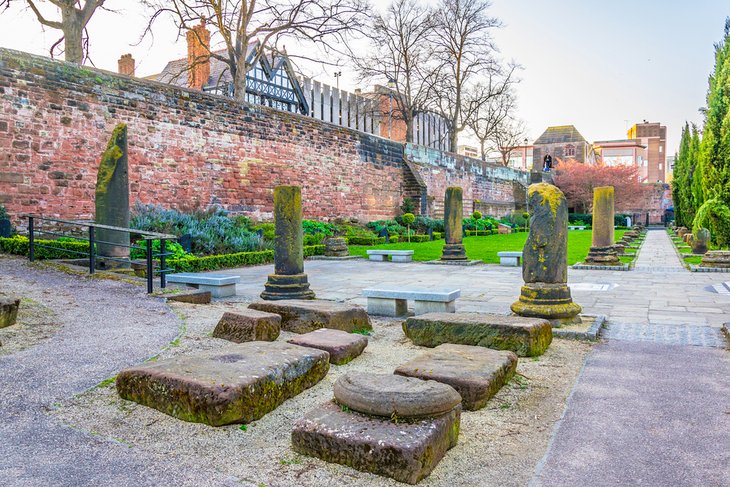
Located close to the Roman Amphitheatre and easily accessible from the magnificent city walls, the Roman Gardens should be on your list of places to visit in Chester. Established in 1949 as a place to display larger building remnants from the Roman fortress at Deva and other sites across the city, it's a delight to explore.
Set lining the garden paths, and perhaps the most notable remains, are the substantial columns that once supported the roof of the old Roman bathhouse and the fortresses' assembly hall. Also worth seeing are the gardens' three modern mosaics, along with a hypocaust, a stone building used by the Romans as a heating system.
While strolling through the gardens, look for the large section of the city wall that looks like it has been repaired. This was where, during the Civil War of 1645, Parliamentarian forces used cannons to create a breach large enough for troops to pass through. Access to the River Dee is also possible from the gardens.
Address: Pepper Street, Chester
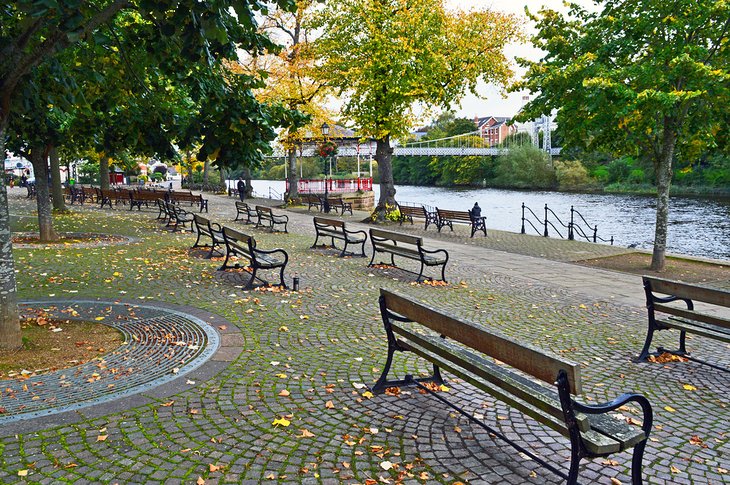
Set alongside the pretty River Dee not far from Grosvenor Park (you can access the park from here), The Grove is fast becoming one of the top free things to do in Chester. This charming riverside promenade is a delightful place for a stroll at any time of year and offers some unique vistas of the city.
Start your stroll at the city walls on Lower Bridge Street on the Dee's north bank and simply follow the path all the way to Grosvenor Park. Along the way, you'll catch some great photo opportunities, including everything from the elegant homes of Queen's Park on the other bank, as well as of the swans that call the area home.
You'll also stroll past some very attractive old Georgian homes and plenty of pretty, tree-lined green space with ample park benches to stop and contemplate. Other top sights here include the Edwardian bandstand (seasonal concerts are offered), as well as the Queen's Park Suspension Bridge. A number of restaurants, tearooms, and cafés are also found here.
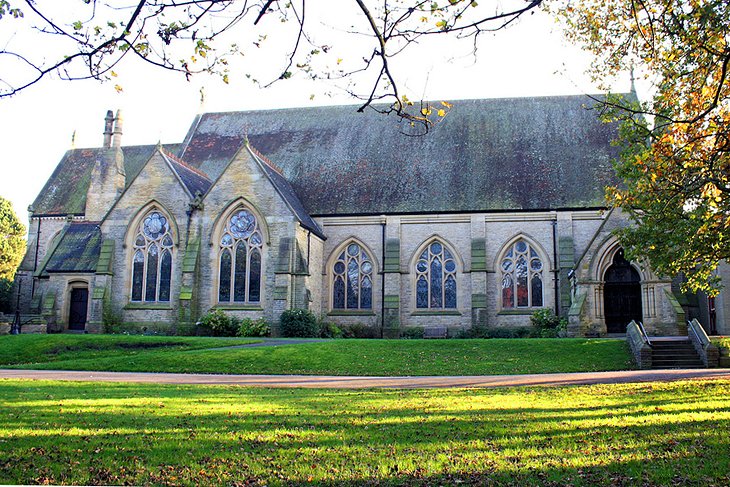
Just around the corner from the amphitheater stands St. John's Church. Known in full as St. John the Baptist's Church, parts of this attractive church – once the city's main cathedral – date from the late 19th century, along with a section comprising an earlier 12th-century Norman church.
The triforium is Transitional and dates from around 1200, and although the original choir and Lady Chapel were destroyed when the central tower collapsed, they can still be seen as picturesque ruins.
Also worth a visit is St. Michael's Church on Bridge Street. Although no longer in use as a church (it's now a heritage center), it contains numerous interesting features, including its fine stained glass windows and a 15th-century chancel.
Location: The Cross, Chester
Official site: https://stjohnschester.uk/history/
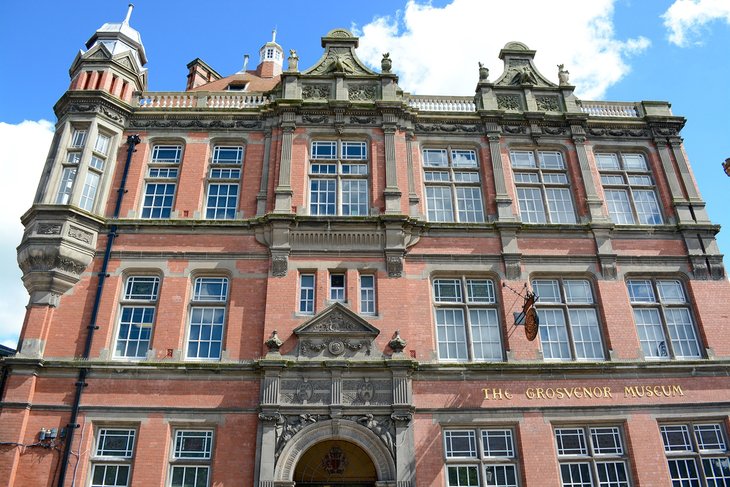
The Grosvenor Museum boasts a fine collection of Roman antiquities, along with special displays illustrating the life of the Roman legionary and the Roman fortification of Britain. Exhibits deal with matters of life and death during Roman times, including medicinal remedies and instruments, as well as impressive collections of modern artworks. There are also numerous paintings and sculptures dating back some five centuries.
At the rear of the museum is 20 Castle Street, the museum's Period House. Built around 1680, it's displayed as a sequence of nine period rooms dating from 1680 to 1925.
Other notable attractions close to Chester that are run by West Cheshire Museums include Weaver Hall Museum and Workhouse , a local history museum housed in what was once a schoolroom in a workhouse; the still-operating 19th-century Stretton Watermill ; and the restored Lion Salt Works near Northwich, with displays related to a once-important local industry.
Address: 27 Grosvenor Street, Chester
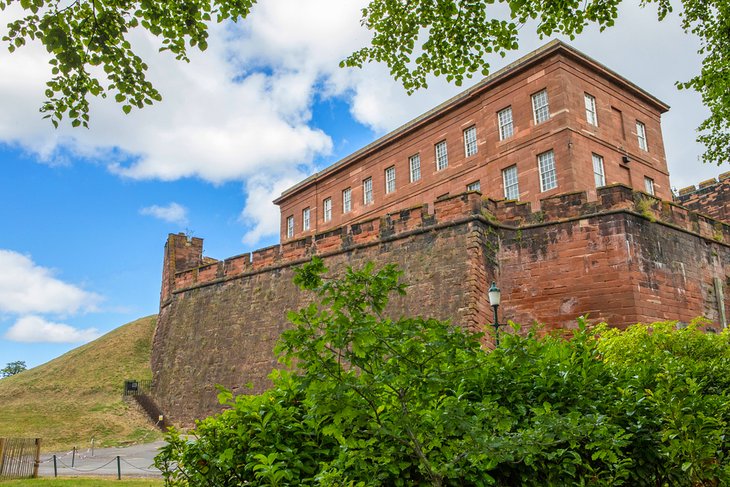
Located in Chester Castle, the Cheshire Military Museum tells the story of the four famous regiments connected with the area from 1685 to the present day. Among the groups and individuals featured in the display are Lord Baden Powell, founder of the scouting movement, and The Cheshire Yeomanry, the last horsed regiment in action during WWII.
Highlights include displays following the exploits of the Regiments of Cheshire, their travels across the world, and the wars in which they fought, including a fascinating exhibit focusing on life in the trenches during WWI. The museum also houses the archive of the Cheshire Regiment, providing information on people who have served with the regiment.
Location: The Castle, Chester
Official site: www.cheshiremilitarymuseum.co.uk
The Craftsmen and women of the Cheshire Workshop not only demonstrate their hand-carved candle-making skills, they encourage visitors to participate in the art, too. The facility also offers glass, pottery, and jewelry displays, as well as a café and gift shop.
The attraction is particularly popular for parents, as the site includes a playground and numerous fun activities for kids.
Address: Barracks Lane, Higher Burwardsley, Tattenhall, Chester
Official site: www.cheshireworkshops.co.uk
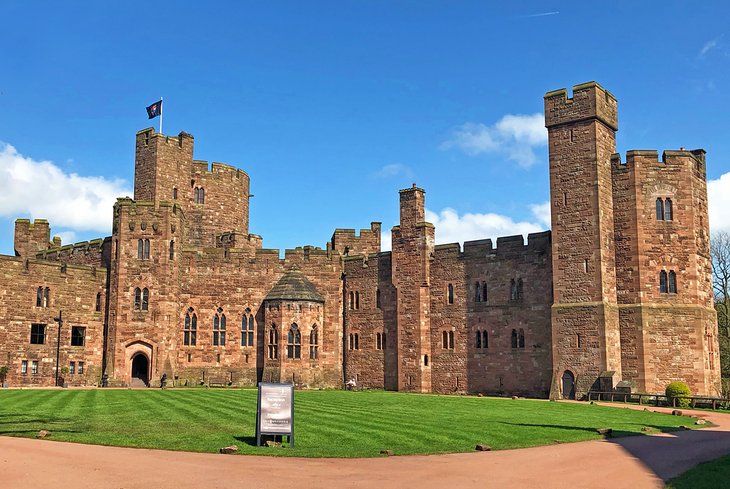
The history of Beeston Castle stretches back more than 4,000 years to its origins as a Bronze Age hill fort. Perched high atop a rocky crag, the castle ruins are fun to explore and offer incredible views of the surrounding countryside, all the way to the Pennines and Wales. An interesting museum is located in the visitor center, and a café is located on the grounds.
A much newer fortress to check out is nearby Peckforton Castle . This attractive medieval-style castle was built in 1850 and made famous as the set for Patrick Bergin's 1991 film, Robin Hood . ( Peckforton Castle now serves as a 4-star luxury hotel.)
Address: Chapel Lane, Beeston
We recommend these highly rated hotels with easy access to Chester's historic monuments and city walls:
- Roomzzz Chester City : A mid-range apartment hotel, Roomzzz Chester City features contemporary design and provides a free breakfast.
- Oddfellows : This affordable boutique hotel is known for its quirky style, themed rooms, afternoon tea, and Mediterranean restaurant.
- Premier Inn Chester Central (South East) Hotel : For a budget hotel, near the bus to the city center, this is a good choice. It features modern decor and comfortable beds.
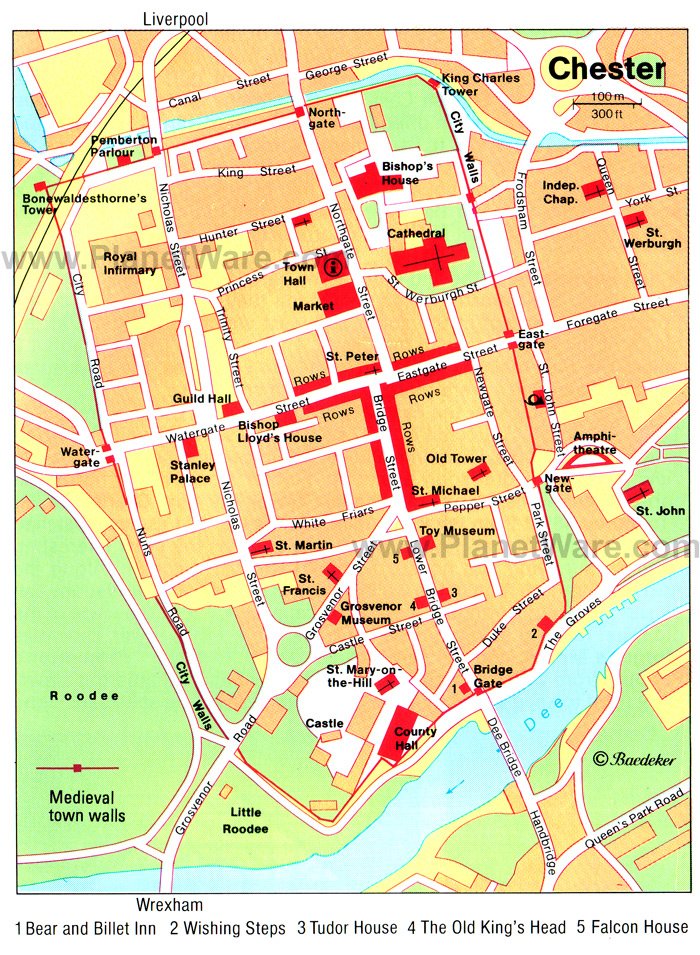
More on England
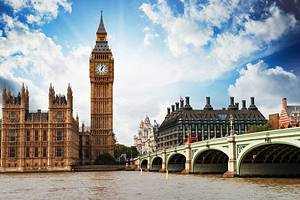

CASTLES CHESTER

Chester Castle: Agricola Tower and Castle Walls
Nestled in the heart of Chester, United Kingdom, lies a true gem of history and architecture – Chester Castle. In particular, the Agricola Tower and Castle Walls stand as captivating remnants of a bygone era. Steeped in history, this remarkable site offers a journey through time that will leave you in awe. Join us as we embark on a journey to discover the captivating positive elements of Chester Castle.
A Glimpse into History
Chester Castle, with its Agricola Tower and Castle Walls, boasts a rich history that dates back over a thousand years. Named after the Roman general Agricola, this historic site has witnessed countless events and has played a significant role in the region's history. It's not just a castle; it's a living testament to the past, inviting visitors to step back in time and explore the fascinating stories it holds.
Awe-Inspiring Architecture
One of the standout features of Chester Castle is the Agricola Tower, a structure that showcases exceptional medieval architecture. As you approach the tower, you'll be greeted by its imposing presence, with its sturdy stone walls and commanding turrets. The tower's design is a testament to the craftsmanship of the time, providing visitors with a visual treat that evokes a sense of wonder.
Breathtaking Castle Walls
The castle walls that encircle Chester Castle offer visitors an opportunity to take a leisurely stroll while marveling at the stunning vistas of Chester and the surrounding areas. These well-preserved walls are a true architectural marvel, providing panoramic views that make for a perfect photo opportunity. As you walk along the walls, you can soak in the beauty of the River Dee, the cityscape, and the lush greenery that surrounds the castle.
A Hub of Learning
Beyond its historical significance and architectural splendor, Chester Castle has evolved into a hub of learning and education. It houses the Cheshire Military Museum, where you can delve into the rich military history of the region. The museum's informative exhibits and interactive displays offer an engaging and educational experience for visitors of all ages.
Events and Activities
Chester Castle is not just a static historical site; it comes alive with a myriad of events and activities throughout the year. From outdoor theater performances to cultural festivals and historical reenactments, there's always something happening at this dynamic venue. Check the local calendar for events that coincide with your visit to make the most of your time at Chester Castle.
A Peaceful Retreat
While exploring Chester Castle's Agricola Tower and Castle Walls, you'll discover that it offers a peaceful retreat from the hustle and bustle of everyday life. The tranquil surroundings, coupled with the historical ambiance, create a serene atmosphere that's perfect for reflection and relaxation. It's an ideal spot to escape the stresses of modern life and enjoy a moment of tranquility.
Visitor-Friendly Amenities
To ensure your visit is as enjoyable as possible, Chester Castle offers a range of visitor-friendly amenities. There are on-site cafes and picnic areas where you can savor a delicious meal or snack. Additionally, there are accessible pathways and facilities to accommodate visitors with mobility challenges, ensuring that everyone can partake in the castle's beauty.
Explore the Historic Charm of Chester Castle
In conclusion, Chester Castle's Agricola Tower and Castle Walls are a true testament to the rich history and architectural heritage of the United Kingdom. As you explore this remarkable site, you'll be captivated by its awe-inspiring architecture, breathtaking views, and engaging educational opportunities. Whether you're a history enthusiast, an architecture lover, or simply seeking a peaceful retreat, Chester Castle has something to offer every visitor. So, make sure to add this historical treasure to your travel itinerary and embark on a journey through time at Chester Castle.
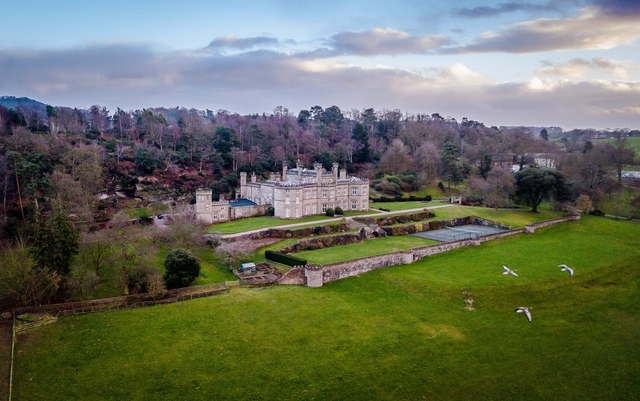
Nestled in the serene countryside of Cheshire, Bolesworth presents a picturesque escape from the hustle and bustle of city life. This enchanting locale, situated near Chester in the United Kingdom, is a perfect blend of natural beauty, historical richness, and contemporary charm. Bolesworth is not just a destination; it's an experience that captivates the heart and soul of every visitor.
Bolesworth Castle - A Historical Beacon
At the heart of Bolesworth lies its crown jewel, Bolesworth Castle. This majestic structure, steeped in history, stands as a testament to the architectural grandeur of bygone eras. The castle, surrounded by lush greenery and tranquil waters, offers a glimpse into the past while providing a stunning backdrop for various events and activities that take place throughout the year.
A Hub for Equestrian Excellence
Bolesworth is renowned for its world-class equestrian events. The Bolesworth International Horse Show, a highlight in the equestrian calendar, attracts riders and enthusiasts from across the globe. This event showcases not only the skill and grace of the competitors but also the deep-rooted equestrian culture that Bolesworth prides itself on.
The Great Outdoors - A Nature Lover's Paradise
For those who love the great outdoors, Bolesworth is a haven. The sprawling estate offers numerous walking trails that meander through woodlands and around the scenic lake. These trails are perfect for a leisurely stroll, a brisk walk, or even a cycling adventure, allowing visitors to immerse themselves in the natural beauty of the Cheshire countryside.
Events and Festivities - A Calendar Full of Excitement
Bolesworth's event calendar is brimming with activities catering to all ages and interests. From the thrilling International Horse Show to music festivals, craft fairs, and seasonal celebrations, there's always something happening in Bolesworth. These events not only entertain but also bring together communities, fostering a sense of belonging and togetherness.
Culinary Delights and Local Produce
A visit to Bolesworth is incomplete without indulging in the local cuisine. The area boasts a variety of dining options, from cozy cafes to elegant restaurants, each offering a taste of the region's culinary delights. Local produce, fresh from the farms, is a staple in many of these establishments, ensuring a delightful and authentic dining experience.
A Destination for All Seasons
Bolesworth's charm is not confined to a particular season. Each season brings its unique beauty and activities, making it a year-round destination. Spring blossoms, summer greenery, autumn hues, and winter's crisp air - every visit to Bolesworth offers a new perspective and a fresh set of experiences.
Embracing Sustainability and Conservation
In today's world, sustainability is more important than ever, and Bolesworth is at the forefront of environmental conservation. The estate is committed to preserving its natural habitats, promoting biodiversity, and implementing eco-friendly practices. This commitment not only enhances the visitor experience but also ensures that the beauty of Bolesworth is preserved for future generations.
A Community Spirit
At its core, Bolesworth is more than just a place; it's a community. The warmth and friendliness of the locals are palpable, adding to the overall charm of the area. Whether you're a first-time visitor or a regular, you'll feel welcomed and embraced by the community spirit that Bolesworth exudes.
Discovering the Charm of Bolesworth, Chester's Hidden Gem
Bolesworth, with its rich history, natural beauty, vibrant events, and warm community, is a destination that truly has it all. Whether you're seeking adventure, relaxation, or a bit of both, Bolesworth in Chester, United Kingdom, is a place that should be on every traveler's list. Come and discover the magic of Bolesworth, where every visit leaves you longing for more.


Oxford University Press's Academic Insights for the Thinking World
The History of the World: Nixon visits Moscow
The history of the world: sixth edition.
- May 22 nd 2013
22 May 1972 The following is a brief extract from The History of the World: Sixth Edition by J.M. Roberts and O.A. Westad.
In October 1971 the UN General Assembly had recognized the People’s Republic as the only legitimate representative of China in the United Nations, and expelled the representative of Taiwan. This was not an outcome the United States had anticipated until the crucial vote was taken. The following February, there took place a visit by Nixon to China that was the first visit ever made by an American president to mainland Asia, and one he described as an attempt to bridge ‘sixteen thousand miles and twenty-two years of hostility.’

When Nixon followed his Chinese trip by becoming also the first American president to visit Moscow (in May 1972), and this was followed by an interim agreement on arms limitation – the first of its kind – it seemed that another important change had come about. The stark, polarized simplicities of the Cold War were blurring, however doubtful the future might be.
Reprinted from THE HISTORY OF THE WORLD: Sixth Edition by J.M. Roberts and O.A. Westad with permission from Oxford University Press, Inc. Copyright © 2013 by O.A. Westad.
J. M. Roberts CBE died in 2003. He was Warden at Merton College, Oxford University, until his retirement and is widely considered one of the leading historians of his era. He is also renowned as the author and presenter of the BBC TV series ‘The Triumph of the West’ (1985). Odd Arne Westad edited the sixth edition of The History of the World . He is Professor of International History at the London School of Economics. He has published fifteen books on modern and contemporary international history, among them ‘The Global Cold War,’ which won the Bancroft Prize.
Subscribe to the OUPblog via email or RSS . Subscribe to only history articles on the OUPblog via email or RSS .
- This Day in History
Our Privacy Policy sets out how Oxford University Press handles your personal information, and your rights to object to your personal information being used for marketing to you or being processed as part of our business activities.
We will only use your personal information to register you for OUPblog articles.
Or subscribe to articles in the subject area by email or RSS
Related posts:

Recent Comments
There are currently no comments.
MIA > Archive > Mandel
Ernest Mandel
De gaulle’s trip to moscow.
Source: From World Outlook , 29 July, 1966, Volume 4, No. 24, Paris and New York City Written: July, 1966 Translated: by World Outlook Transcrition & Marked-up: by David Walters for the Marxists’ Internet Archive 2009. Public Domain: Creative Commons Common Deed . You can freely copy, distribute and display this work; as well as make derivative and commercial works. Please credit “Marxists Internet Archive” as your source, include the url to this work, and note any of the transcribers, editors & proofreaders above.
[The following article has been translated from the July 9 issue of the Belgian left socialist weekly La Gauche.]
“As to alliances, we would think that they ought to be constructed ‘in three stages’: a Franco-Russian treaty procuring a first degree of security; the Anglo-Soviet pact and an agreement to be concluded between France and Great Britain constituting a second degree; the future pact of the United Nations, in which America would be a capital element, crowning the whole and serving as the ultimate recourse.” It was in these terms that Charles de Gaulle in December 1944, at the time of his first trip to Moscow, defined his concepts concerning European security, according to his Memoirs. (Volume III, p. 83, “Livre de Foche” edition.) Many things indicate that he has not changed his mind twenty-two years later. Wasn’t his second trip to Moscow designed to advance this concept?
Those with a more dour outlook will immediately object. The head of the Fifth Republic had something much more Machiavellian in mind. What he is aiming at is the predominance of France in Europe, or at least Western Europe if he is unable to extend it “from the Atlantic to the Urals.”
Since France doesn’t have the necessary economic weight, it must neutralize the drive of German industry through military superiority and diplomatic ruses. Hence it has two interests in common with the Kremlin—to block the Bundeswehr from getting nuclear arms and to break the American grip on “little Europe.” Thus the trip to Moscow was a power play against Washington and Bonn.
No doubt these analysts are right on the long-range aims of the general. But the nature of things is such that the designs of men—no Tatter how imbued with their own “grandeur”—are not at all sufficient to shape the destiny of the world. This is determined by the relationship among the big social forces. More than once in history, the diplomatic maneuvers of a power that was too weak have ended in serving the ‘big ones” despite the best intentions in the world. Didn’t this happen once again with the trip to Moscow?
Thus in the United States, the most cunning, like the servile tools of the (Johnson administration, carefully refrained from denouncing the general. “De Gaulle in Moscow served the United States despite the United States,” said some. ‘He worked for the whole West,’ others said approvingly. In Bonn, after weeks of glacial chill, the barometer of Franco-German relations again points to “fair weather.”
The truth is that de Gaulle, contrary to the groundless fears of some, did not betray his West German class brothers any more than he did his Polish class brothers at the time of his first trip.
In December 1944, Stalin dangled a “good, firm alliance,” real support against the Anglo-Saxons, in return for immediate recognition of the Lublin committee. But de Gaulle was not deceived. This would moan betraying a perhaps ‘democratic’ but certainly bourgeois Poland in behalf of a perhaps despotic but certainly noncapitalist Poland. And he did not want to take responsibility for an act contrary to “honor and honesty.” (Memoirs, Volume III, p sa.)
In June 1966, Brezhnev and Kosygin dangled an offer of just as real support against the United States, even genuine political leadership in Europe. In exchange they asked for recognition of the German Democratic Republic; that is, “of the two German states.” Be Gaulle brusquely replied that there could be no question of recognizing this “artificial construction. And with that rejoinder the serious conversation came to an end. The balance was nothing but decorations and fine talk.
Of course, the differences between Paris and Washington, between Fans and Bonn, are real in relation to the political future of our continent, its relations with the United States and the best strategy to follow to block the rise of the anti-imperialist and anticapitalist forces in the world.
Be Gaulle seeks a Europe freed largely from American supremacy. He seeks an Atlantic alliance on the basis of equality between North America and a Western Europe combined under his guidance. He favors a more supple policy, with regard to the USSR, which in his opinion should be definitively separated from China and the “extremists” among the revolutionists of the Third World, through some indispensable concessions.
He holds that it is necessary to “relax” the tensions to be able to resolve the questions in dispute, such as the reunification of Germany, while the Americans and the Germans of Bonn maintain that without this reunification no real relaxation is possible in Europe. But at bottom, they all defend a common cause—the cause of Big Capital. They all seek to hold back the enemy—socialism and the peoples of the Third World who are rising and seeking to break out of the capitalist world market. They all seek refuge under the “nuclear umbrella” of the Pentagon, without which they cannot counterbalance Soviet military power on the European continent (if anything confirms this, it is the explosion of the ridiculous French nuclear device in Polynesia which amounts to nothing in face of the power of the USSR). The means may differ, the aim is the same.
In this respect the Soviet Union represents something else again. The means are perhaps the same, but the aim is entirely different. Thus treaties on mutual consultation can be concluded—even by means of a direct telephone line!—treaties on technical cooperation, or whatever cultural and commercial exchanges are desired; the fundamental opposition between the interests of the French bourgeoisie and the Soviet leaders will by no means make it possible to form a genuine alliance in the present world context.
The Soviet leaders are aware of the weakness of the present Communist parties in Western Europe (for which they are in part responsible). They are aware of the temporary stabilization of caitalism in this part of the world (which they largely contributed to). From this they draw the conclusion that it is necessary to return to a policy that seeks to ‘exploit the interimperialist contradictions,” as before the second world war. They commit an error in believing that de Gaulle is ready to follow them into a têtei-tête, when he seeks in reality only to increase his power and prestige within the Atlantic Alliance
The French Communist leaders would obviously make a still greater error in concluding that the time has come for an ‘agonizing revision” of their political orientation in France, as in 1935 or 1944.
It is true that the policy of the USSR places them before a cruel dilemma; they no longer know if they should applaud or complain when the Soviet crowds cheer the person who remains, until proved otherwise, the fiercest and most dangerous class enemy of the French workers. If they oppose him, they are tempted to make an alliance with de Gaulle’s pro-American adversaries like Nollet and Nitterrand—and then the capitals of Eastern Europe are not very contented. And if they approve, what remains of their role as an opposition in France? There remains the socialist perspective which stands in complete opposition to the politics of de Gaulle; but the leaders of the French Communist party do not think this is any more “realistic’ than do the Social Democratic leaders of the SF10, or even the technocratic ideologists of neocapitalism.
That will the practical results of the trip amount to? The American Newsweek summarized the situation as follows: “At least he will have succeeded in engaging the Russians in a new diplomatic dialogue with the West.” That puts it in a nutshell. At a time when the intensification of the American aggression against the Vietnamese people makes a public dialogue between Moscow and Washington more difficult, de Gaulle is playing, objectively, the role of go-between for the Atlantic Alliance as a whole Thanks to him, the head of one of the capitalist states in this alliance has been acclaimed by crowds in the Soviet Union. For the first time in many years they have been shown a face of capitalism which their own leaders now say is benevolent, attractive, peaceful, full of good intentions toward the peoples of the world.
Pravda in connection with this trip, talks about an ‘irreversible process.” Let them beware of certain processes, which while still reversible, bode nothing good for the USSR. By attending mass in Leningrad, de Gaulle, like a good politician, was already prepa:ing for his coming trip to Poland. Rumania, ceaselessly increasing its trade with the West, already told the Russians in Bucharest that it would like to see the Warsaw pact modified just as de Gaulle wants to modify NATO. Decidely, if things are in movement, thanks not a little to the general, not everything is stirring in favor of socialism and not everything is stirring against the interests of American imperialism.
Back to the Ernest Mandel Internet Archive
Last updated on 7 February 2009

Chester Castle: Agricola Tower and Castle Walls
- Offers & Events
Get Inspired
Description.
Chester Castle lies in the south-west part of the walled city; founded by William the Conqueror in 1070 it became the administrative centre of the earldom of Chester.
During the reigns of Henry III and Edward I the castle served as the military headquarters for the conquest of Wales and much building was carried out, especially in the outer bailey. In the later medieval period, the monarch rarely stayed at the castle, but it continued to serve as the centre for the county administration.
During the Civil War (1642–6) it was the headquarters of the Royalist governor, John, Lord Byron. Subsequently, a permanent garrison was stationed there, and between 1788 and 1813 the outer bailey was completely rebuilt in the neoclassical style. The buildings still serve as the county hall, courts and regimental museum, but the military finally withdrew in 1999.
Today, the remaining medieval parts lie in what was formerly the inner bailey, reached through an archway at the far right-hand corner of the parade ground.
The twelfth-century Agricola Tower is the original gateway to the castle and the blocked passage arch is still visible.
Located on the first floor of the tower is the chapel of St Mary de Castro, which contains the remains of some high-quality wall paintings of about 1240. During the early 19th century the chapel was used as a gunpowder store and the heavy, copper-plated door dates from this period.
When you leave the tower and climb the stairs onto the castle walls, you can really appreciate the location of the castle within the city. From here you will be able to see the Old Dee Bridge, the traditional route into north Wales and the Roodee, the silted-up port area of Chester, which is now Chester Racecourse .

- Arts, Heritage & Culture
Sightseeing & Tours
Good To Know

- Self Guided Tours
Chester Castle Grosvenor Street Chester CH1 2DN
Get in touch
Your Name (required)
Your Email (required)
Your Phone Number
Your Message (required)
Please leave this field empty.

Subscribe to our Newsletter
Subscribe to our newsletter.
EXPLORE CHESTER
- Food & Drink
- Things to do
Places To Stay
Food & Drink
- Restaurants in Chester
- Cafes in Chester
- Bars & Pubs in Chester
- Food & Drink Offers
- Takeaway in Chester
Get IN TOUCH
Have an enquiry or want to list your business or event on Chester.com?
Visit Chester
About Chester
Travelling to Chester
Parking in Chester
Accessible Chester
Shopping in Chester
Hotels & Places To Stay
Chester Heritage
Chester City Walls
Parks & Gardens
Child & Family Friendly
Dog Friendly Places
Gift Vouchers & Experiences
Afternoon Tea
Allergen Friendly
Craft Beer & Real Ale
Gluten Free Options
Italian Restaurants
Outdoor Seating
Mediterranean Restaurants
Pan Asian Restaurants
Thai Restaurants
Sunday Lunch
Vegan & Vegetarian Options
Wine Specialists
Private Dining
Things To Do
Days Out & Activities
Cinema & Theatre
Museums & Galleries
Bars & Pubs
Spa Days & Spa Breaks
Animals & Nature
Adventure Activities
Flying Experiences
Driving Experiences
Watersports
Hen Parties
Watch Live Sport
Kids Parties
Team Building
Sports & Leisure
Food & Drink Experiences
Chester Experience Days
What’s On
Chester Races
Music Events
Markets & Exhibitions
Quiz Nights
Virtual Events
Queen’s Jubilee
Chester Pride
B&Bs and Guest Houses
Self Catering & Aparthotels
Family Friendly
- Privacy & Cookies Policy
- Terms of Website Use
Jump to main content
Jump to navigation
- Latest News Read the latest blog posts from 1600 Pennsylvania Ave
- Share-Worthy Check out the most popular infographics and videos
- Photos View the photo of the day and other galleries
- Video Gallery Watch behind-the-scenes videos and more
- Live Events Tune in to White House events and statements as they happen
- Music & Arts Performances See the lineup of artists and performers at the White House
- Your Weekly Address
- Speeches & Remarks
- Press Briefings
- Statements & Releases
- White House Schedule
- Presidential Actions
- Legislation
- Nominations & Appointments
- Disclosures
- Cabinet Exit Memos
- Criminal Justice Reform
- Civil Rights
- Climate Change
- Foreign Policy
- Health Care
- Immigration Action
- Disabilities
- Homeland Security
- Reducing Gun Violence
- Seniors & Social Security
- Urban and Economic Mobility
- President Barack Obama
- Vice President Joe Biden
- First Lady Michelle Obama
- Dr. Jill Biden
- The Cabinet
- Executive Office of the President
- Senior White House Leadership
- Other Advisory Boards
- Office of Management and Budget
- Office of Science and Technology Policy
- Council of Economic Advisers
- Council on Environmental Quality
- National Security Council
- Joining Forces
- Reach Higher
- My Brother's Keeper
- Precision Medicine
- State of the Union
- Inauguration
- Medal of Freedom
- Follow Us on Social Media
- We the Geeks Hangouts
- Mobile Apps
- Developer Tools
- Tools You Can Use
- Tours & Events
- Jobs with the Administration
- Internships
- White House Fellows
- Presidential Innovation Fellows
- United States Digital Service
- Leadership Development Program
- We the People Petitions
- Contact the White House
- Citizens Medal
- Champions of Change
- West Wing Tour
- Eisenhower Executive Office Building Tour
- Video Series
- Décor and Art
- First Ladies
- The Vice President's Residence & Office
- Eisenhower Executive Office Building
- Air Force One
- The Executive Branch
- The Legislative Branch
- The Judicial Branch
- The Constitution
- Federal Agencies & Commissions
- Elections & Voting
- State & Local Government
Search form
Building on the “reset” – the vice president’s visit to moscow.
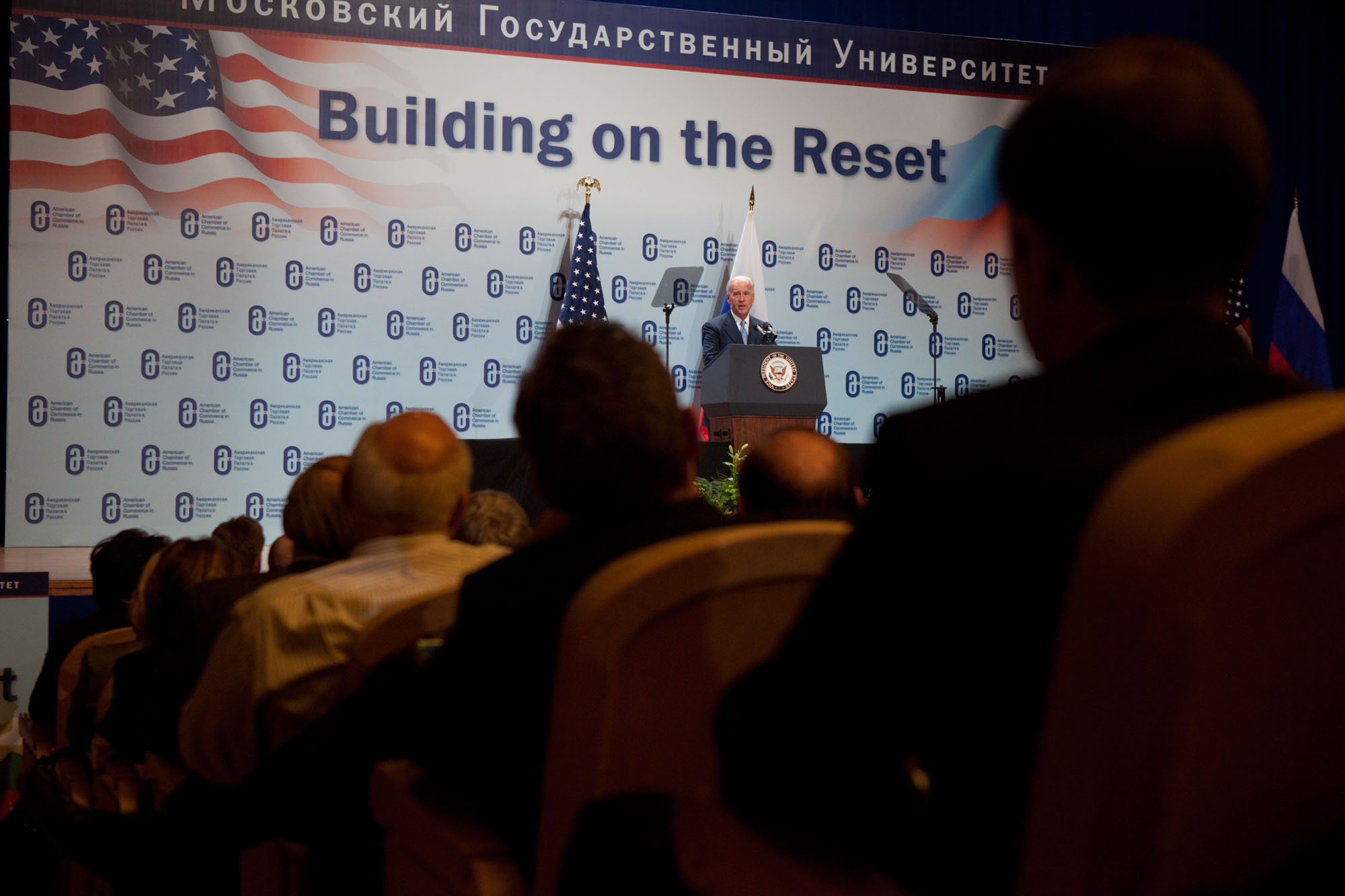
Vice President Joe Biden speaks to the American Chamber of Commerce and Russian students at Moscow State University, in Moscow, Russia, March 10, 2011. (Official White House Photo by David Lienemann)
Today, before a packed auditorium at Moscow State University, Vice President Biden delivered a powerful speech to U.S. and Russian students and business leaders. Echoing messages conveyed during his earlier meetings with Russian President Dimitry Medvedev and Prime Minister Vladimir Putin over the course of his three-day visit, Vice President Biden hailed the successful “reset” of U.S.-Russian relations and reiterated his call for broader economic cooperation between the two countries.

Vice President Joe Biden, talks with Russian President Dmitry Medvedev at the Gorky Dacha outside Moscow, Russia, March 9, 2011. (Official White House Photo by David Lienemann)

Vice President Joe Biden greets Russian Prime Minister Vladimir Putin at the Russian White House, in Moscow, Russia, March 10, 2011. (Official White House Photo by David Lienemann)
Issuing the strongest support yet for Russia’s entry into the World Trade Organization, the Vice President said,“it’s better for Americans and better for Russians to be able to trade with each other under predictable and transparent rules.”
On the issue of human rights and the status of democracy and the rule of law in Russia – a topic discussed at length in meetings with Russian civil society and political opposition leaders earlier today, the Vice President said: “History showsthat in industrialized societies, economic modernization and political modernization must go hand and hand.”
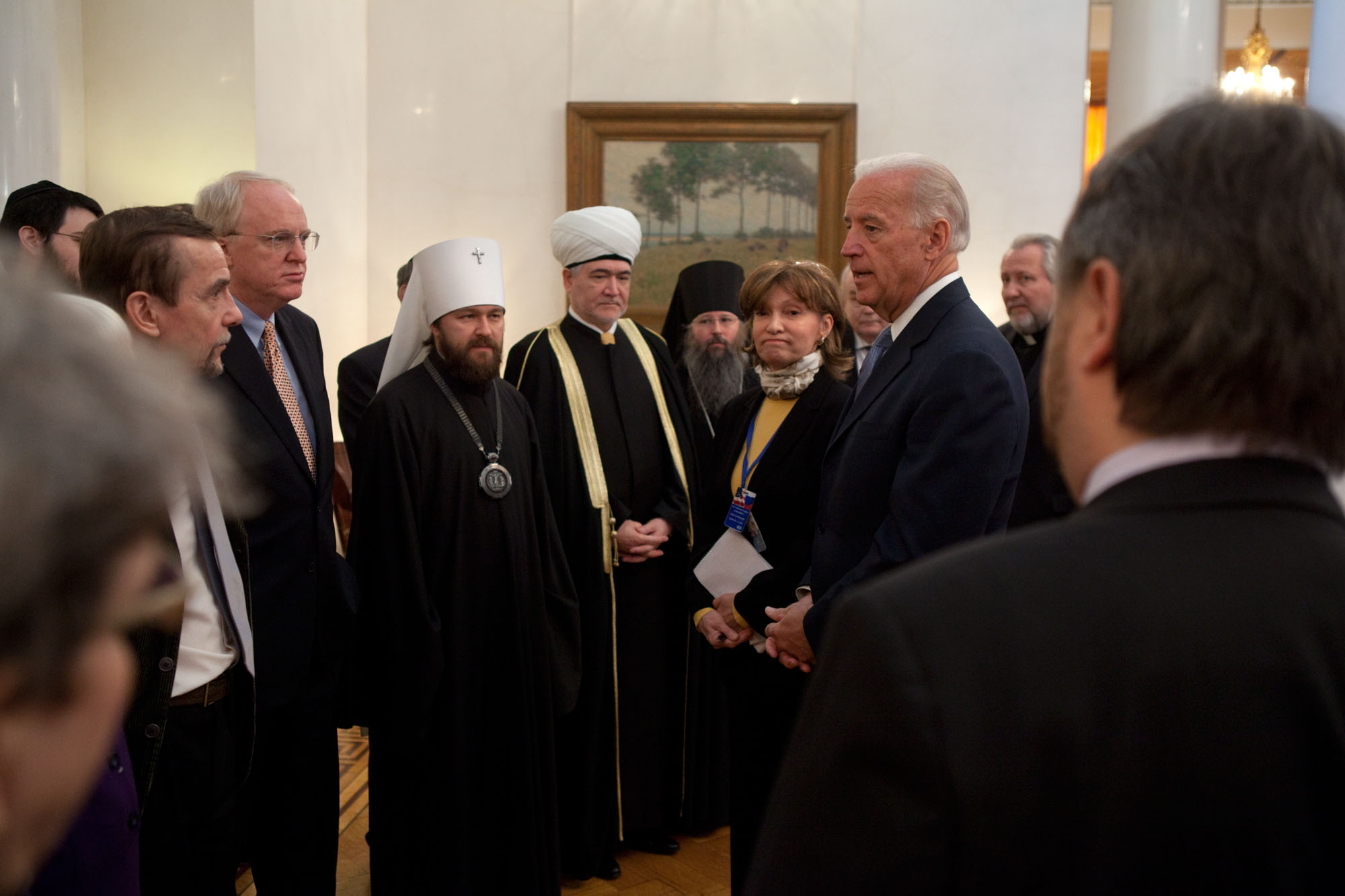
Vice President Joe Biden and U.S. Ambassador John Beyrle talk with civil society leaders at the U.S. Ambassador's residence in Moscow, Russia, March 10, 2011. (Official White House Photo by David Lienemann)
Yesterday, the Vice President and Dr. Biden visited the Tomb of the Unknown Soldier in the Alexander Garden. As a military honor guard looked on, the Vice President observed a moment of silence in recognition of the Russian soldiers who died in World War II and ceremonially placed a wreath that read “To those who fell in the fight against fascism, from the American people.”
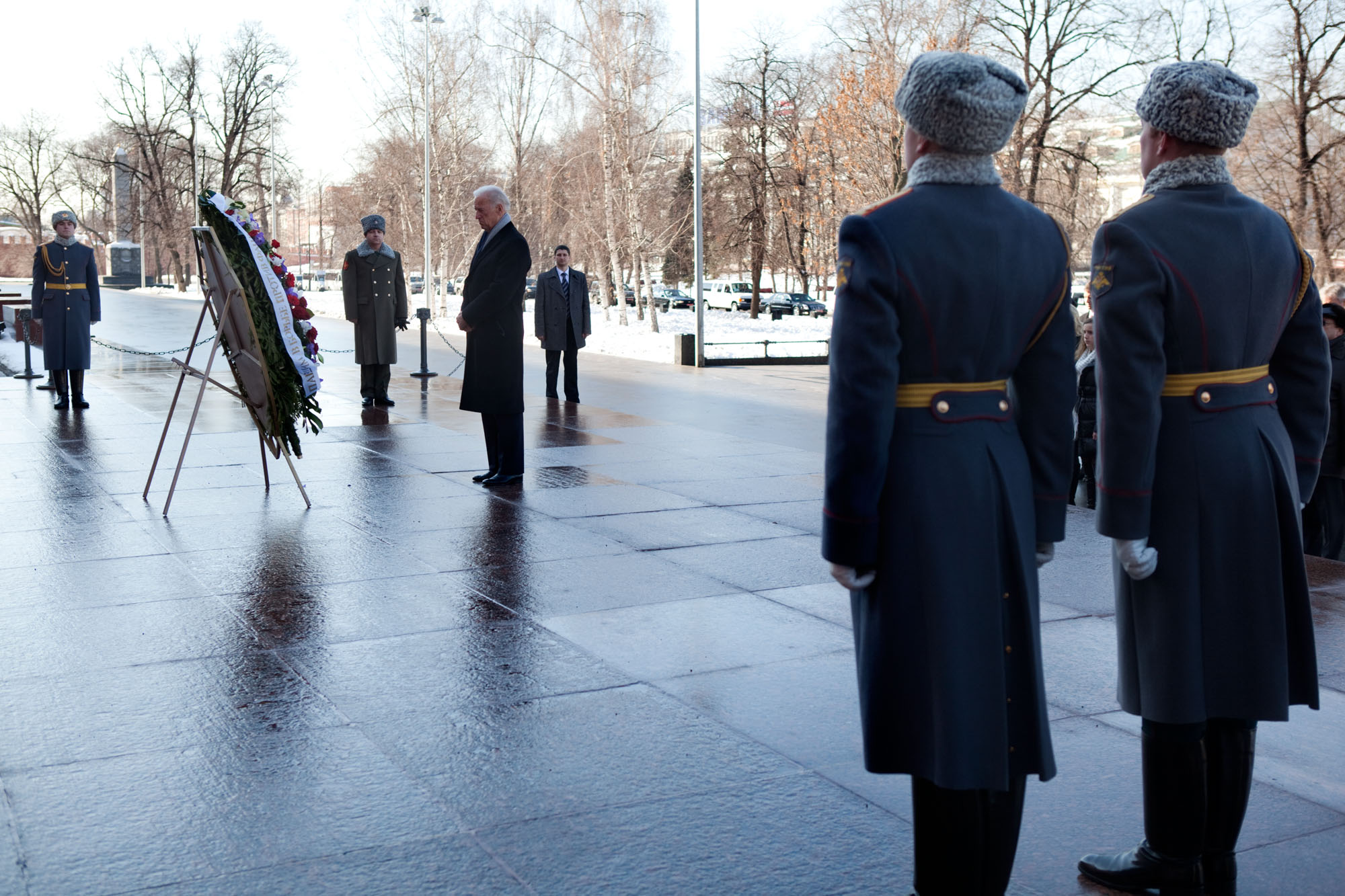
Vice President Joe Biden observes a moment of silence during a wreath laying ceremony at the Tomb of the Unknown Soldier outside the Kremlin Walls in Moscow, Russia, March 9, 2011. (Official White House Photo by David Lienemann)
Later, the Vice President attended a signing ceremony for the sale of Boeing 777 jets to Aeroflot – which will support more than 10,000 jobs at home - in the impressive building of the Moscow School of Management at Skolkovo, an area that Moscow hopes to develop into the Russian equivalent of Silicon Valley. Afterwards, he and Russian Deputy Prime Minister Igor Shuvalov led a roundtable discussion with Russian and American business leaders. The Vice President added that beyond negotiations between our governments, the U.S. is also relying on the growing connections between Russian and American business leaders and leaders in civil society to build a comprehensive relationship between the U.S. and Russia.
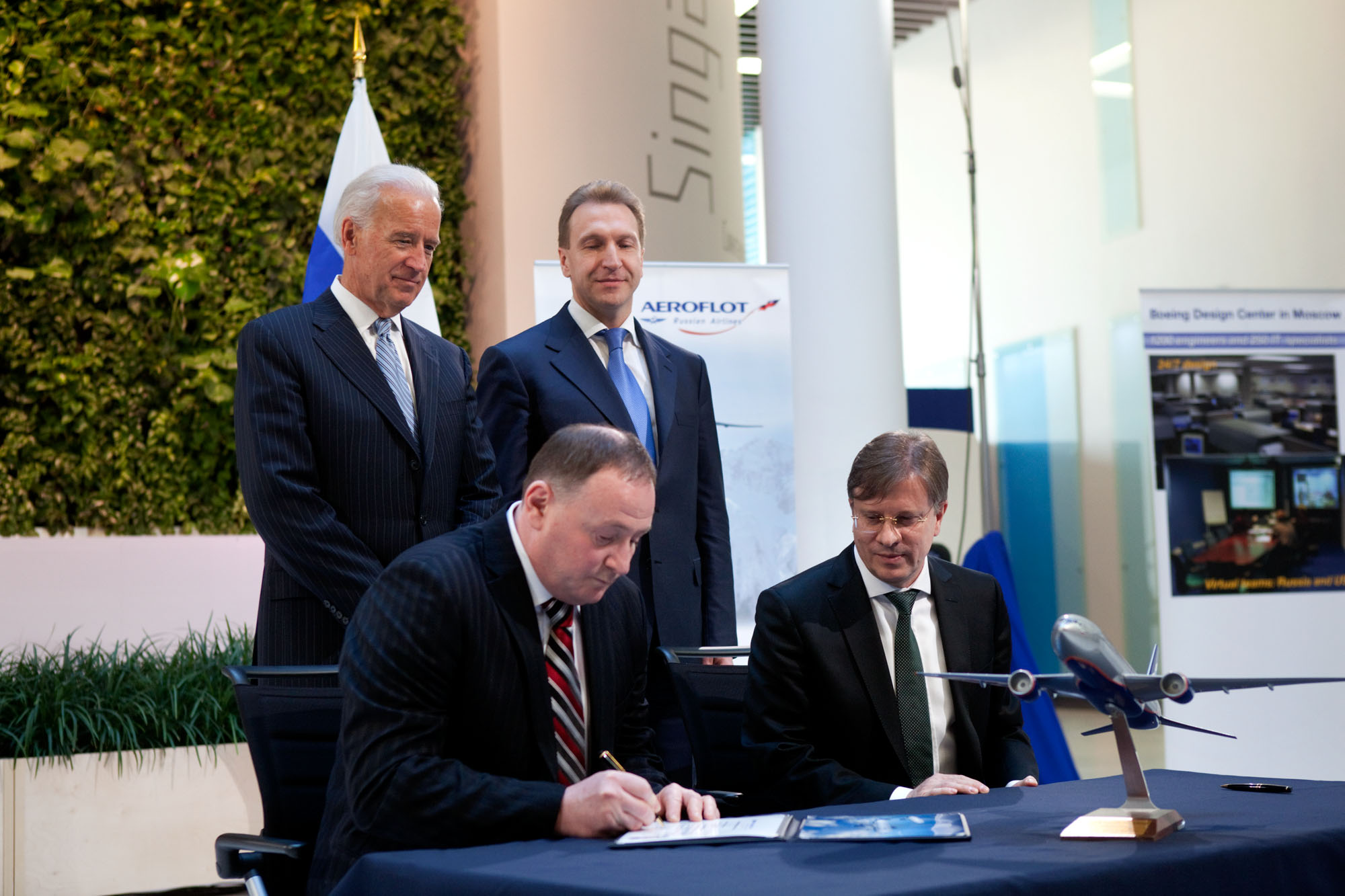
Vice President Joe Biden, and Russian Deputy Prime Minister Igor Shuvalov watch as Boeing Russia CEO Sergey Kravchenko and Aeroflot General Director Vitaly Saveliev sign an agreement for Aeroflot to purchase Boeing Jets at Skolkovo School of Management in Moscow, Russia, March 9, 2011. (Official White House Photo by David Lienemann)

Vice President Joe Biden holds a roundtable discussion with American and Russian business leaders and Russian Deputy Prime Minister Igor Shuvalov at Skolkovo School of Management in Moscow, Russia, March 9, 2011. (Official White House Photo by David Lienemann)
Elizabeth Alexander

Watch President Obama's final State of the Union address.

Read what the President is looking for in his next Supreme Court nominee.

Take a look at America's three newest national monuments.

IMAGES
VIDEO
COMMENTS
Address: Grosvenor Street , Chester, Cheshire, CH1 2DN. Before You Go. The 12th-century Agricola Tower was the first stone gateway to Chester Castle, which had been founded by William the Conqueror in 1070 in the south-west part of the city. On the first floor is the chapel of St Mary de Castro, which contains some exceptionally fine wall ...
The ancient city is a truly breathtaking experience. Each chapter of Chester's history is etched into the very fabric of the city. Well, you are walking where Roman Legionaires marched to war, Viking raiders wreaked havoc and Norman invaders conquered Anglo Saxons. Chester has the most complete city walls, the oldest racecourse and the largest ...
Places to Visit. Chester Castle: Agricola Tower and Castle Walls. Prices and opening times. Directions. Prices and opening times. History.
By climbing the nearby stairs to the wall-walk, you can appreciate the castle's position within the city. Chester Tours run charged guided tours; the "Secret Tour" includes a visit to the Castle and Agricola Tower. There are two tours per month departing from the Town Hall Visitor Information Centre on the first Tuesday and third Friday ...
Sep 2018. Chester Castle is only a shell of its former self, a court house and car park have been built over a large part of the castle. The castle is often closed, as it was the day I went, and is only open then to visitors by appointment. You can see the outside of the castle clearly as you walk the city walls. Read more.
Chester Castle was founded by William the Conqueror in 1070 and became the administrative centre of the earldom of Chester. The first earth and timber 'motte-and-bailey' castle probably only occupied the area of the inner bailey. In the 12th century it was rebuilt in stone and the outer bailey added. In 1237 the last earl died and the ...
Chester Castle is in the city of Chester, Cheshire, England.It is sited at the southwest extremity of the area bounded by the city walls.The castle stands on an eminence overlooking the River Dee.In the castle complex are the remaining parts of the medieval castle together with the neoclassical buildings designed by Thomas Harrison which were built between 1788 and 1813.
Built in 1070 on the site of an earlier Roman fortress, the only surviving part of medieval Chester Castle is the 12th century gateway. Miriam Bibby & Elizabeth Craig-Johnson 2 min read Address: Grosvenor Street, Chester, Cheshire, CH1 2DN ... Visit by guided tour only. Tours run twice a month from the beginning of April to the end of October.
Chester is justifiably famous for its amazing architecture and historical sites,the influence of the Roman empire is there to be enjoyed and Chester Castle is yet another amazing structure and piece of architecture to be viewed in this fantastic walled city. Constructed in 1070 by Hugh D'Anvranches who was the second Earl Of Chester ,in all ...
The castle was built in 1070 by Hugh d'Avranches, the second Earl of Chester and hosted visits from many powerful figures in the medieval period, including kings Edward I and Richard II. The original structure would have been a Saxon motte-and-bailey castle with a wooden tower, which was replaced in the 12th century by a square stone tower ...
In November 1950, a treasure hoard was discovered by workmen close to Chester Castle dating back to AD 965-970. It included 27 ingots, 547 coins and 120 items of hacksilver jewellery. Regale your friends and family on your trip with these facts about Chester Castle on your next visit. Based on Grosvenor Street and overlooking the Dee, the ruins ...
On Monday 19 and Tuesday 20 February English Heritage are running exclusive tours of Chester Castle. Join our expert volunteers and learn about the fascinating 900 history of the castle. The tours are free of charge but we do welcome donations. Entrance to the castle gate can be found in the County Court Car Park. Parking is available in the Little
Visiting Chester Castle. Chester Castle stands in ruins, overlooking the River Dee in Chester, England. The castle hails back to 1070, standing in the southwest end of the city walls. Chester Castle and the Agricola Tower, and the inner bailey are opened a few times a week in season, but visitors can walk the city walls. Parking.
1. Take a Walk along Chester City Walls Chester City Walls . Built mostly of red sandstone, Chester's City Walls follow the even older Roman walls, except where they extend to the river to include Chester Castle.The complete circuit - the best preserved of its kind in Britain - is a nearly two-mile walk taking in the four main gates: Northgate, Eastgate, Bridgegate, and Watergate.
Check the local calendar for events that coincide with your visit to make the most of your time at Chester Castle. A Peaceful Retreat. While exploring Chester Castle's Agricola Tower and Castle Walls, you'll discover that it offers a peaceful retreat from the hustle and bustle of everyday life.
Chester Castle and Agricola Tower, Chester, Cheshire. 706 likes · 73 talking about this · 39 were here. Official Page for Chester Castle and Agricola Tower. The castle is cared for by English Heritage.
Thursday, March 26, 2015 by Admin. The first Patriarch of Moscow and All Russia, Iov (Job) (1589-1605) Nicholas Zernov 1898-1980. In 1588, the Patriarch of Constantinople, Jeremiah, came to Moscow in quest of alms. It was the first time that a senior hierarch of the Eastern Church had visited Russia. He was greeted with pomp and many festivities.
Chester Castle Open Event. Chester Castle: Agricola Tower and City Walls, Grosvenor Street, Chester, Cheshire, CH1 2DN. Come and join us for a rare opportunity to see inside Chester Castle. English Heritage will be bringing the story of the castle to life with our knowledgeable volunteers highlighting aspects of medieval life. Entrance via the ...
When Nixon followed his Chinese trip by becoming also the first American president to visit Moscow (in May 1972), and this was followed by an interim agreement on arms limitation - the first of its kind - it seemed that another important change had come about. The stark, polarized simplicities of the Cold War were blurring, however doubtful ...
It was in these terms that Charles de Gaulle in December 1944, at the time of his first trip to Moscow, defined his concepts concerning European security, according to his Memoirs. (Volume III, p. 83, "Livre de Foche" edition.) Many things indicate that he has not changed his mind twenty-two years later.
The twelfth-century Agricola Tower is the original gateway to the castle and the blocked passage arch is still visible. Located on the first floor of the tower is the chapel of St Mary de Castro, which contains the remains of some high-quality wall paintings of about 1240. During the early 19th century the chapel was used as a gunpowder store ...
Chester Castle, Grosvenor Street, Chester, Cheshire, CH1 2DN. Chester Castle in the Great War Living History Event Come and join us for our family friendly event on Saturday 27 and Sunday 28 April 2024, 10 am- 3pm. Entry is free. English Heritage will be telling the stories of Chester Castle during World War One.
Vice President Biden delivers a powerful speech to U.S. and Russian students and business leaders, hailing the successful "reset" of U.S.-Russian relations and reiterating his call for broader economic cooperation between the two countries. Vice President Joe Biden speaks to the American Chamber of Commerce and Russian students at Moscow ...